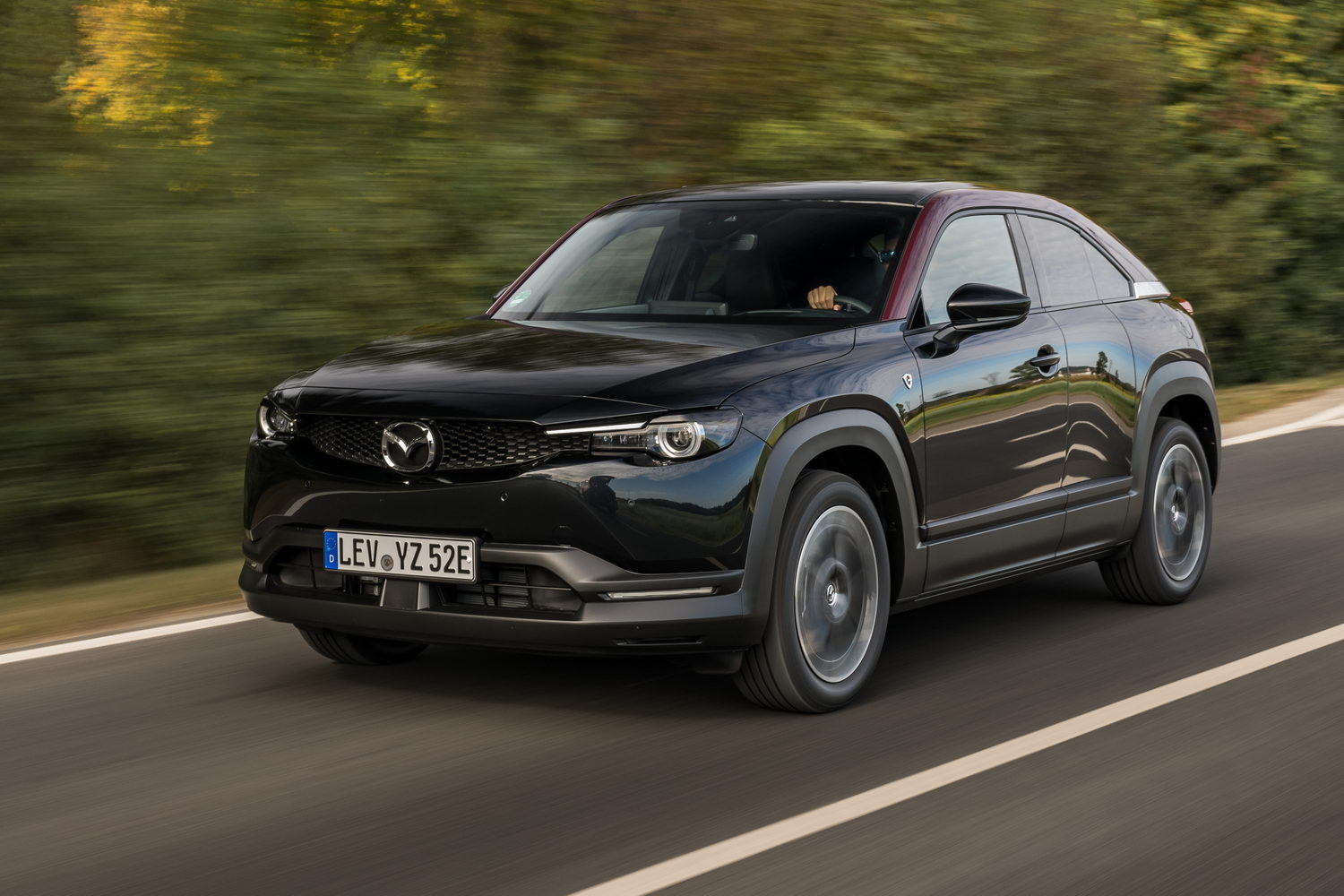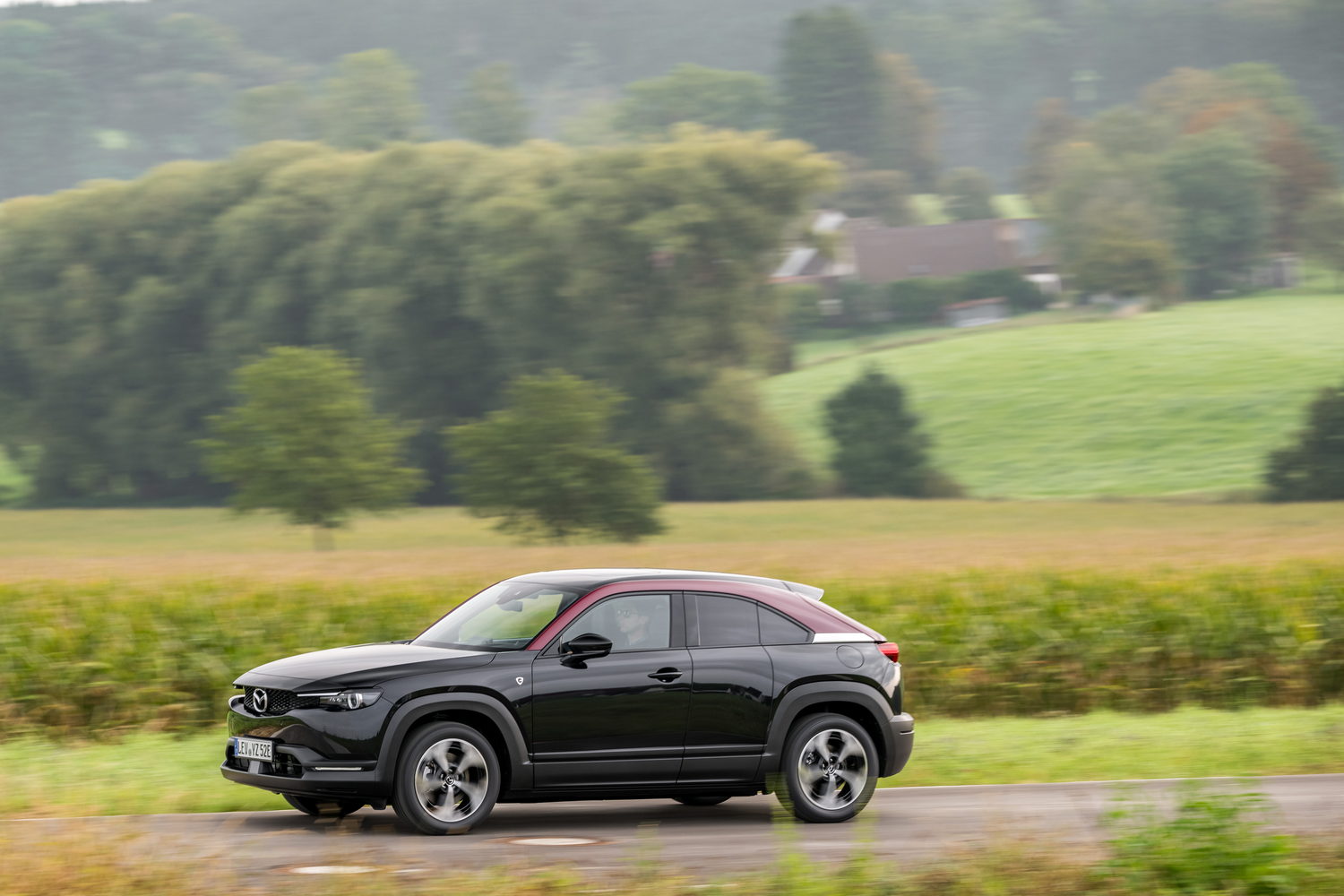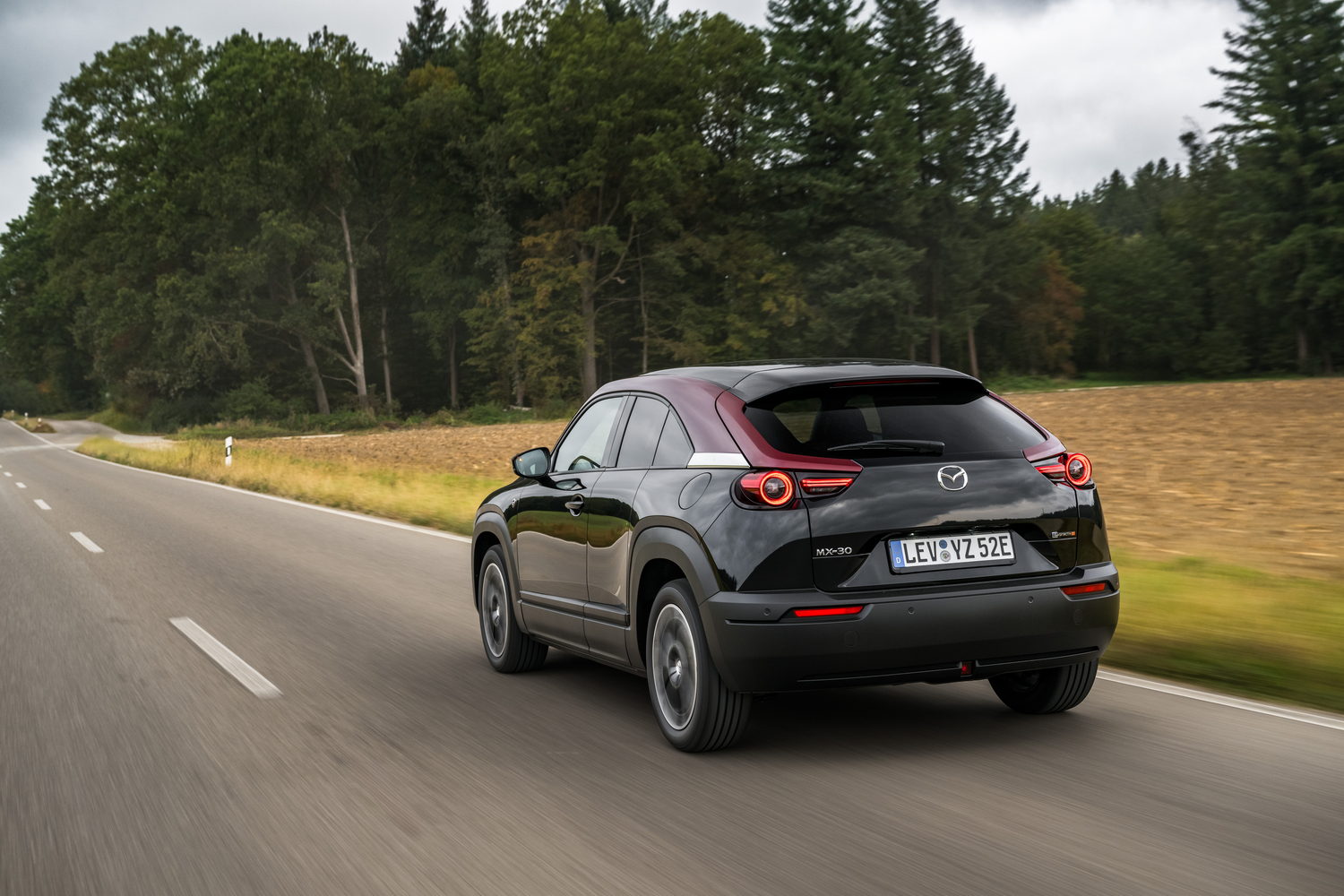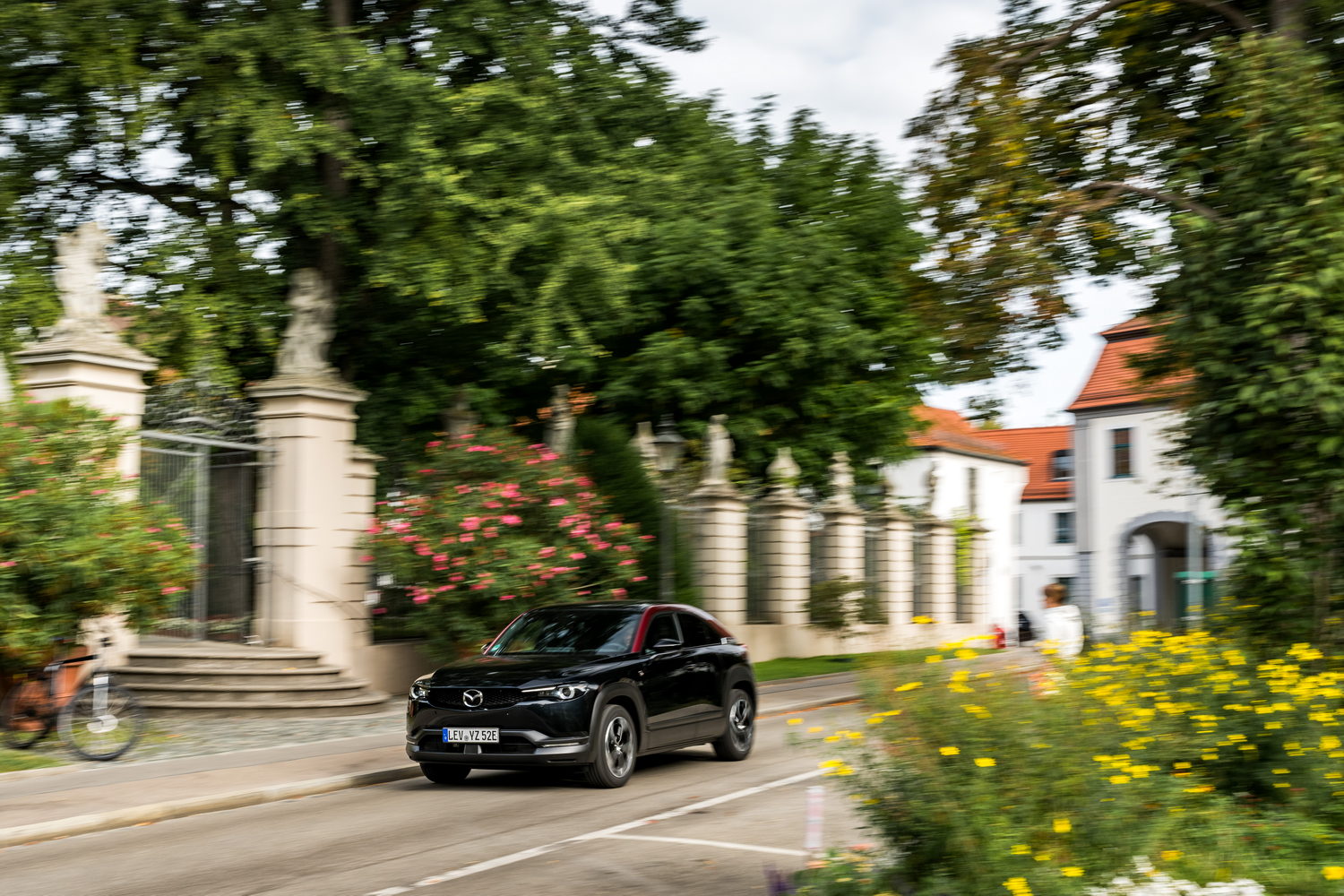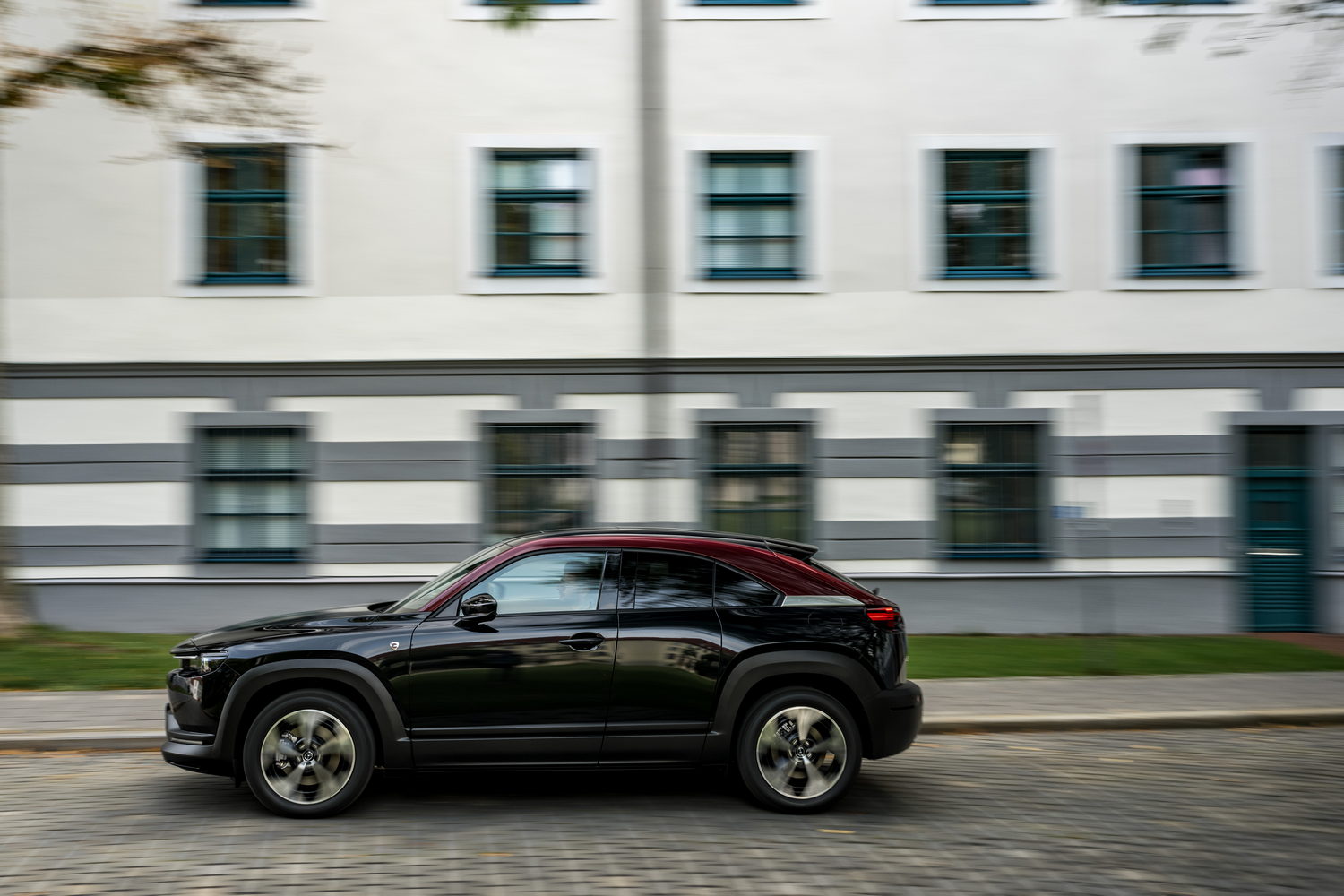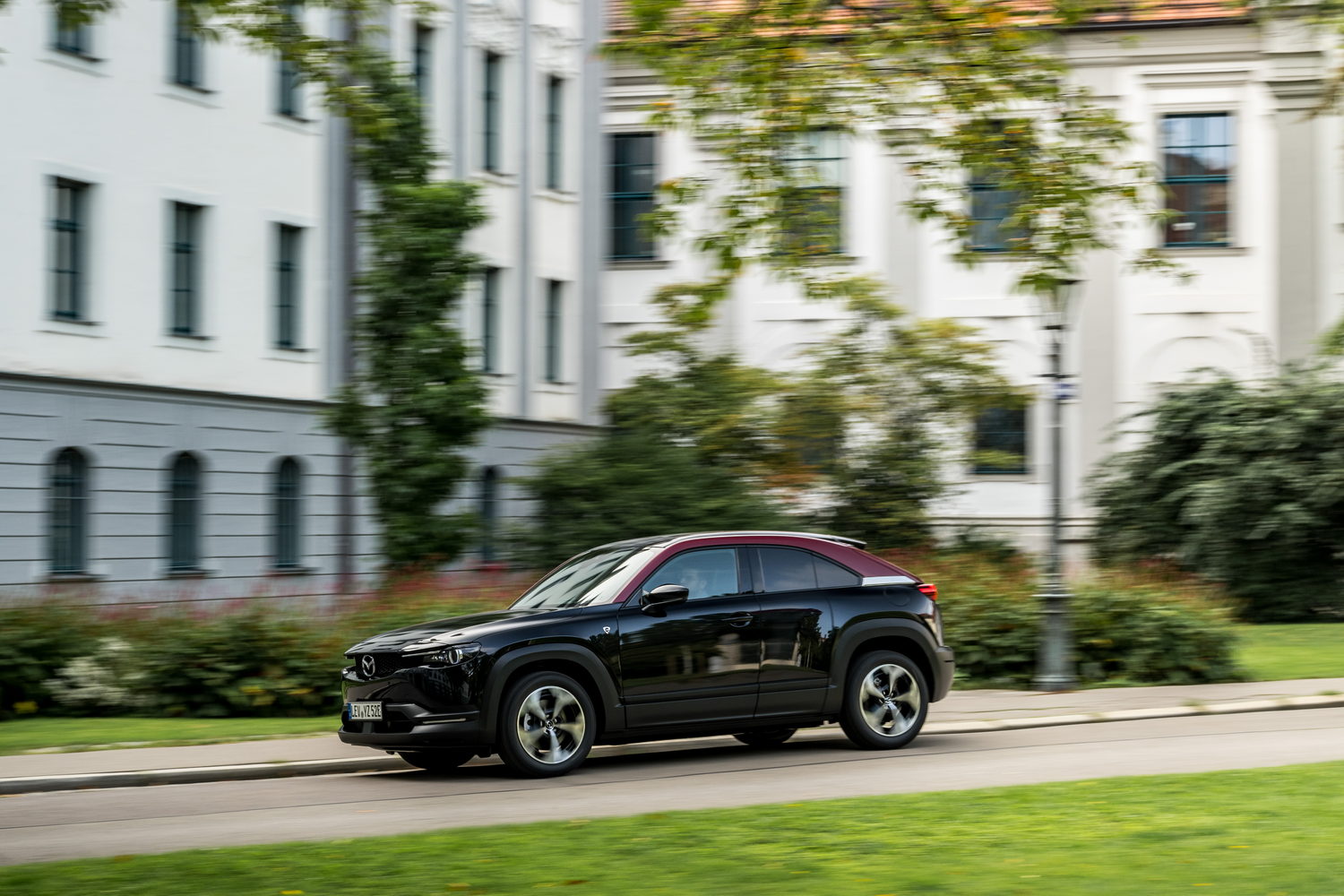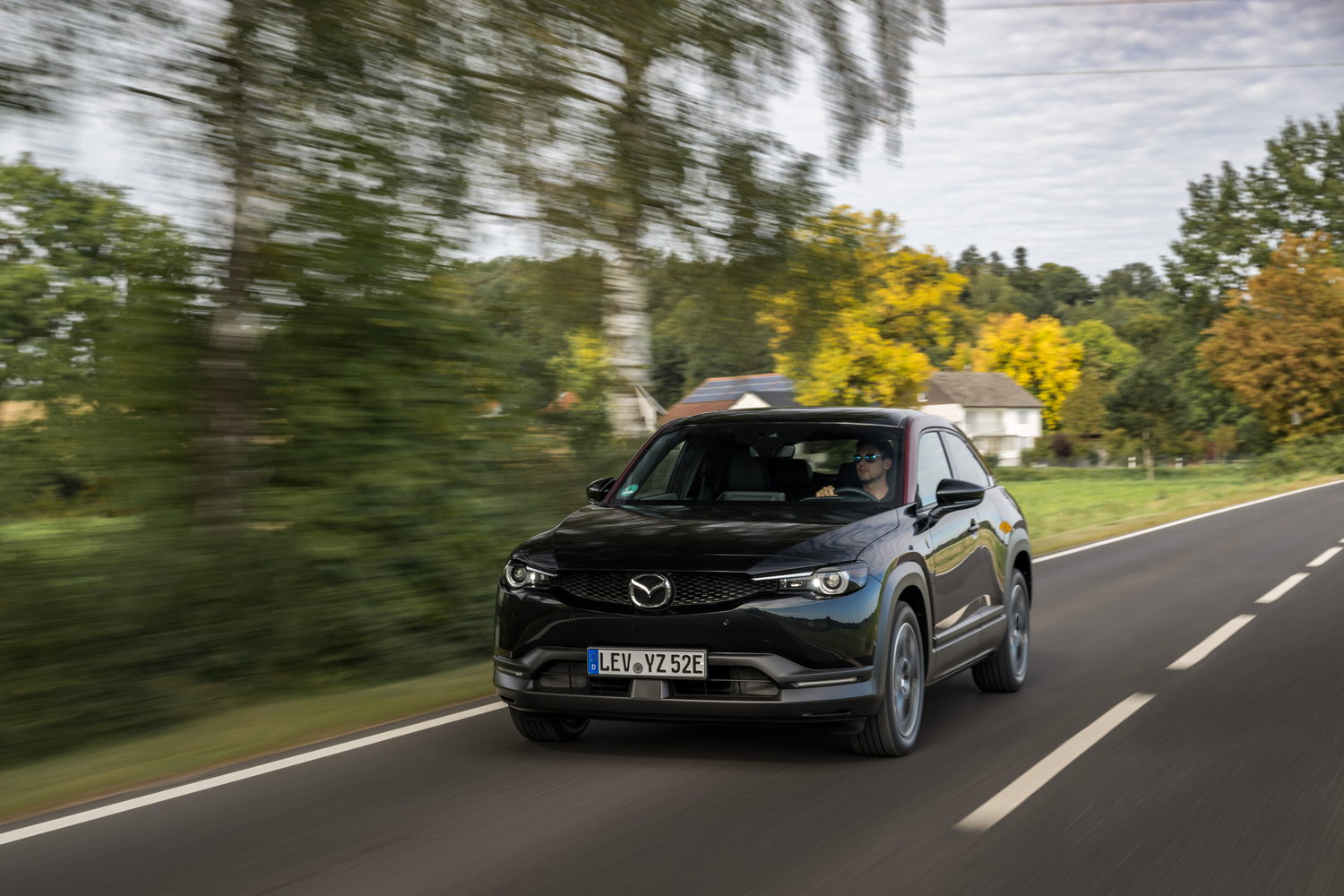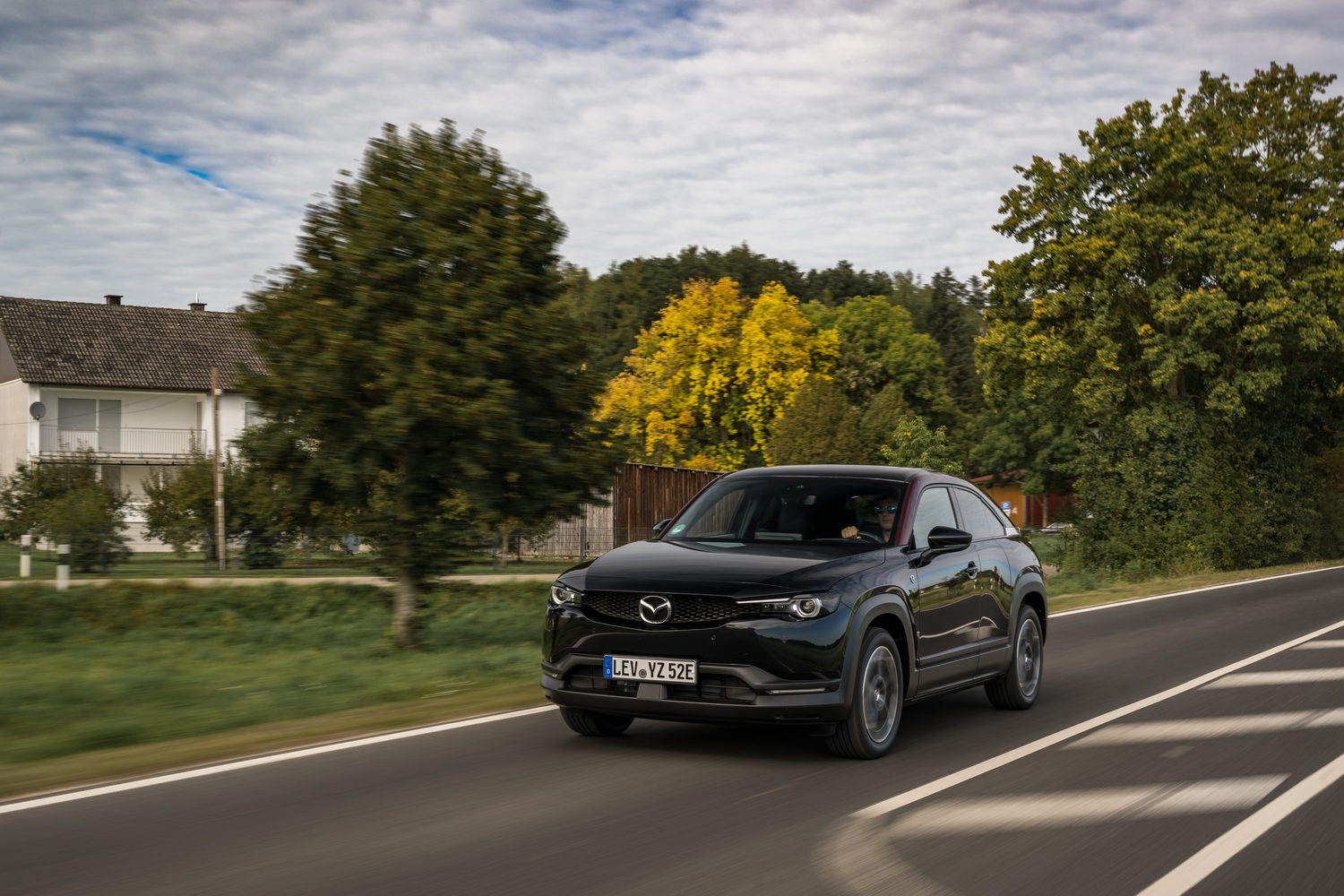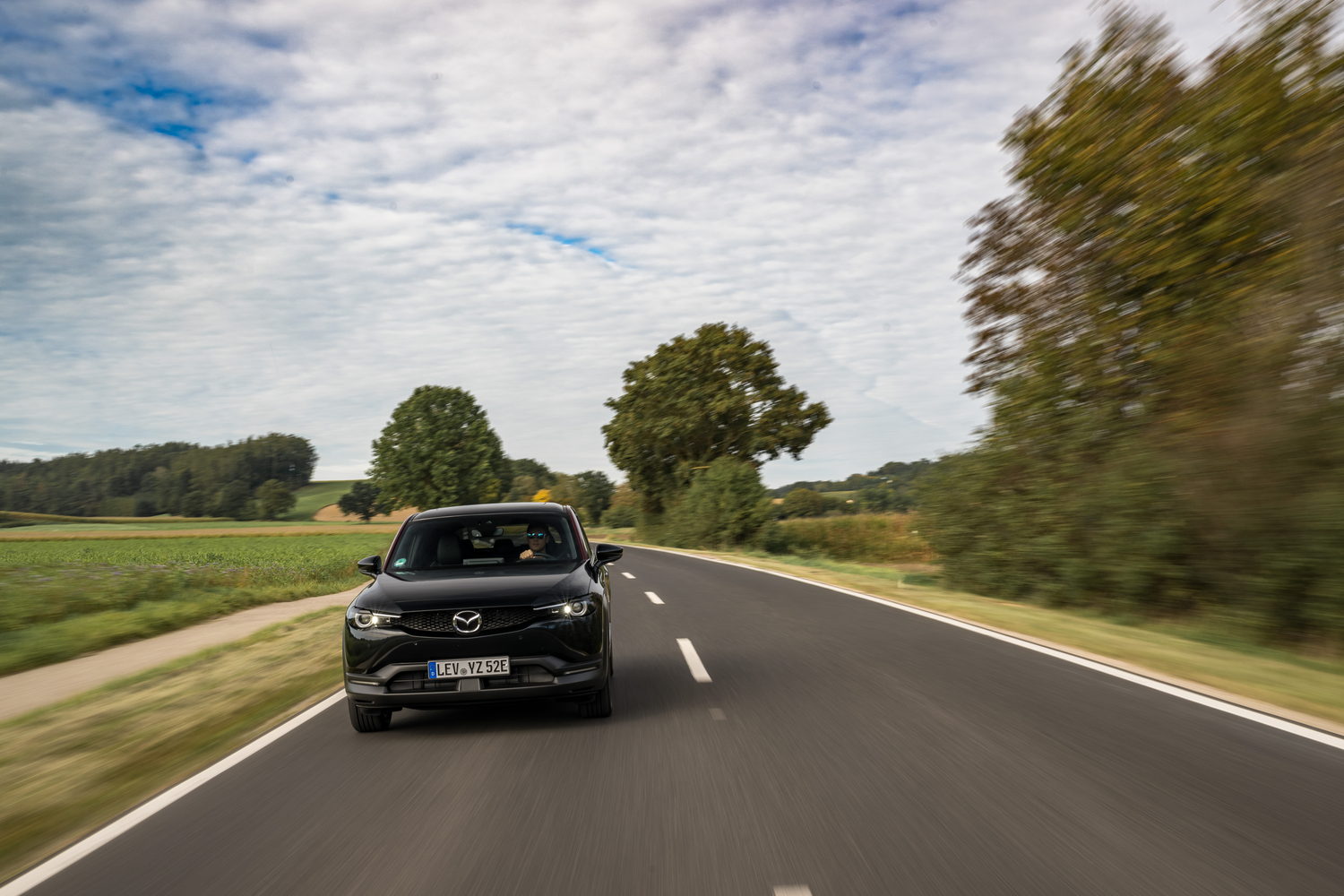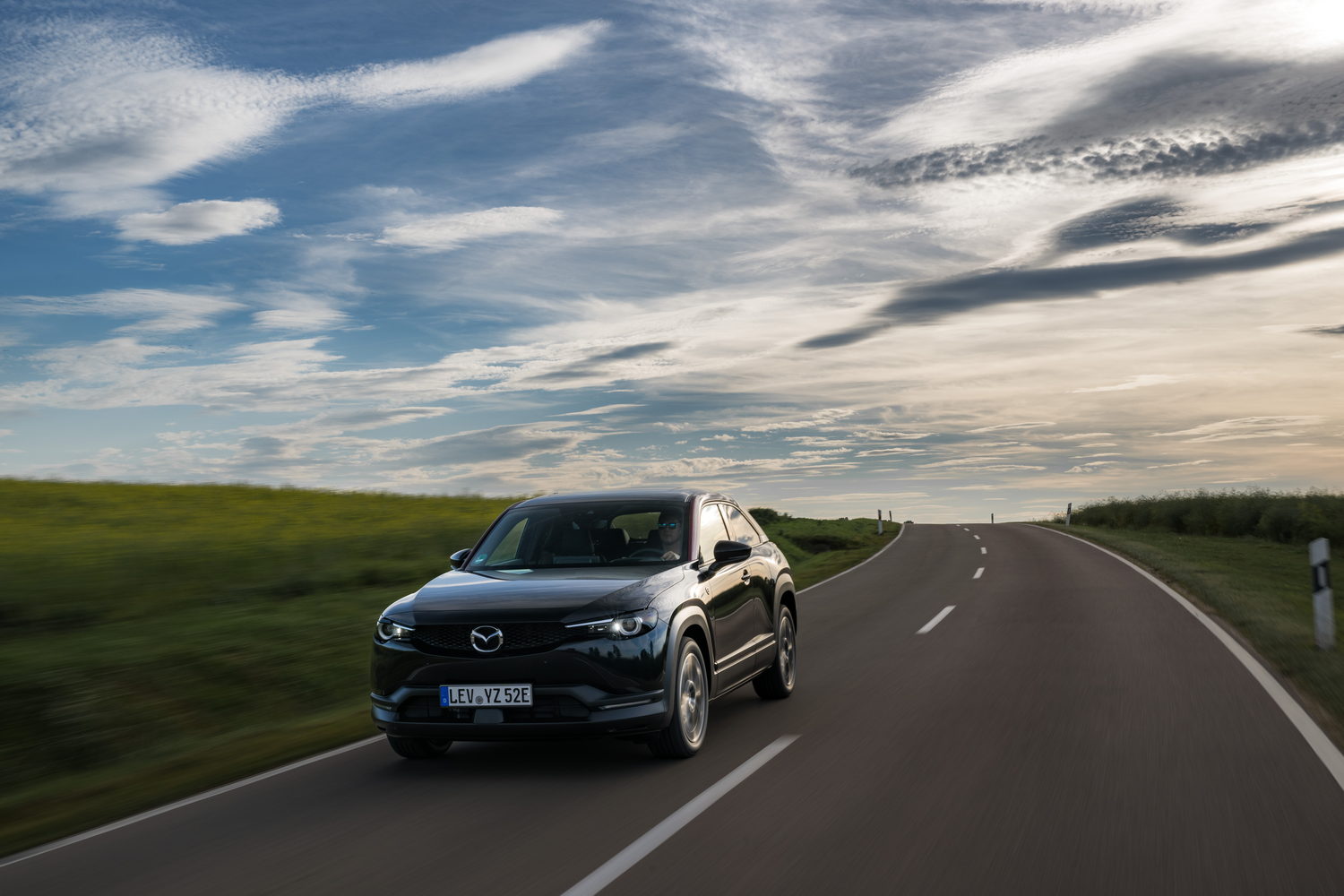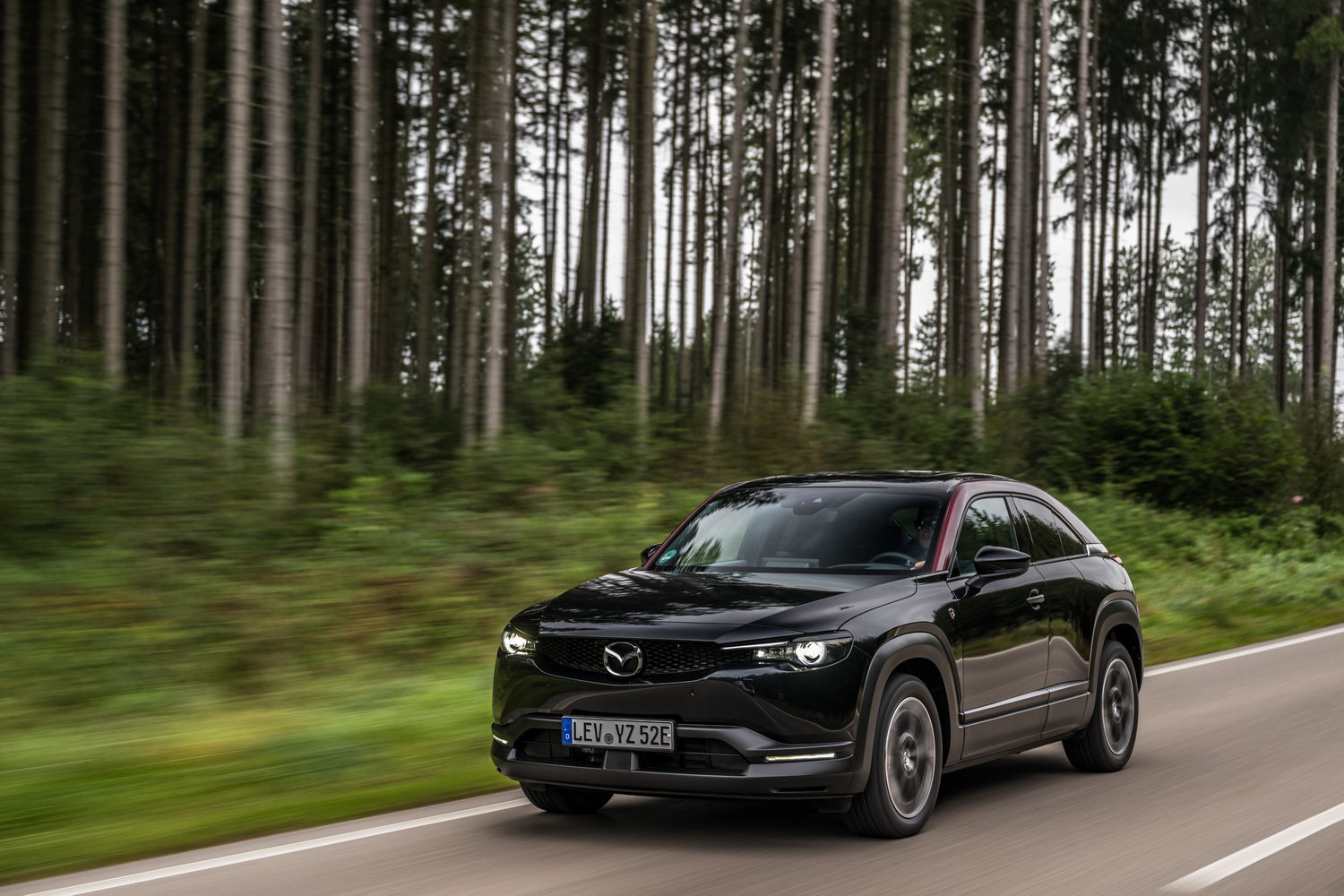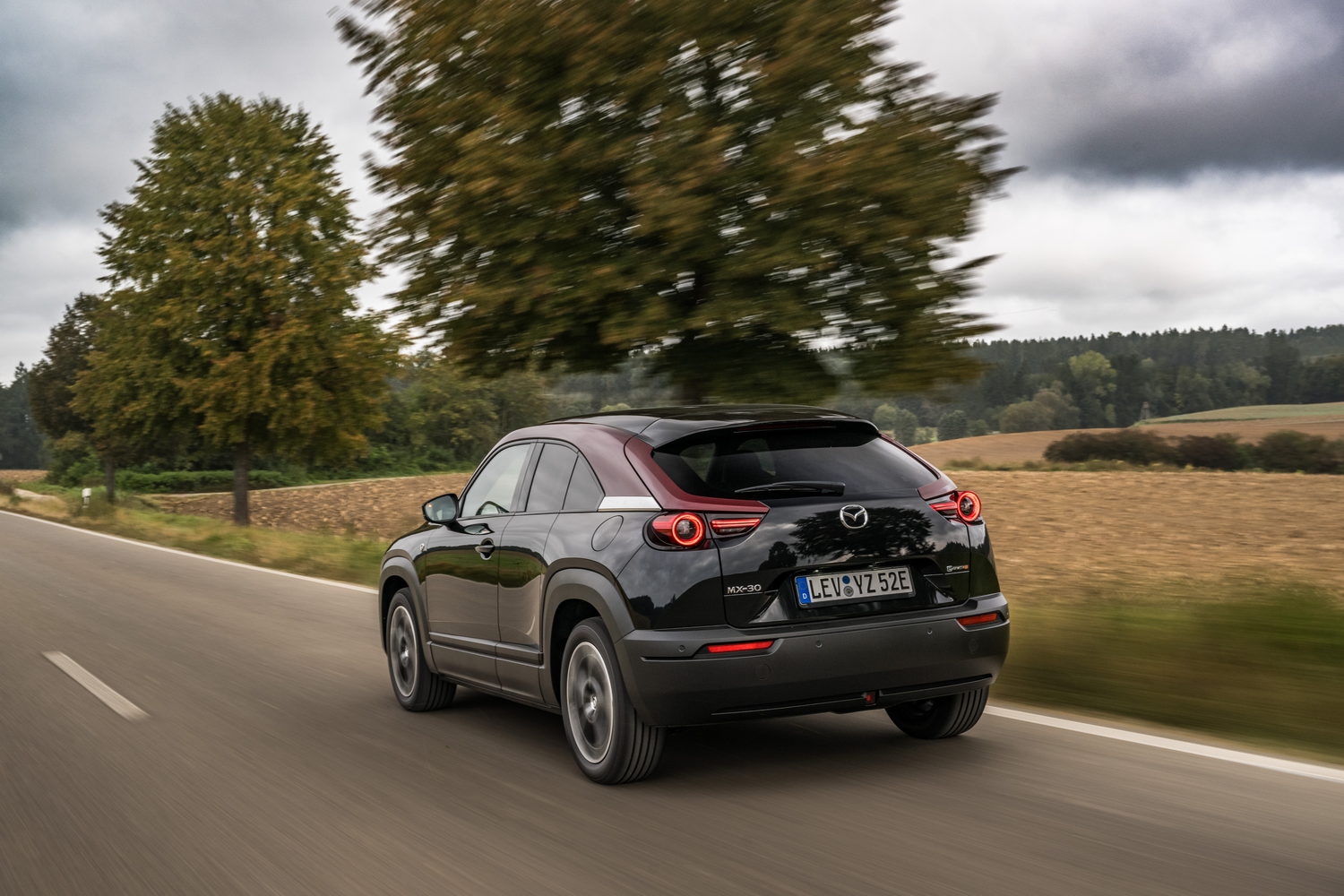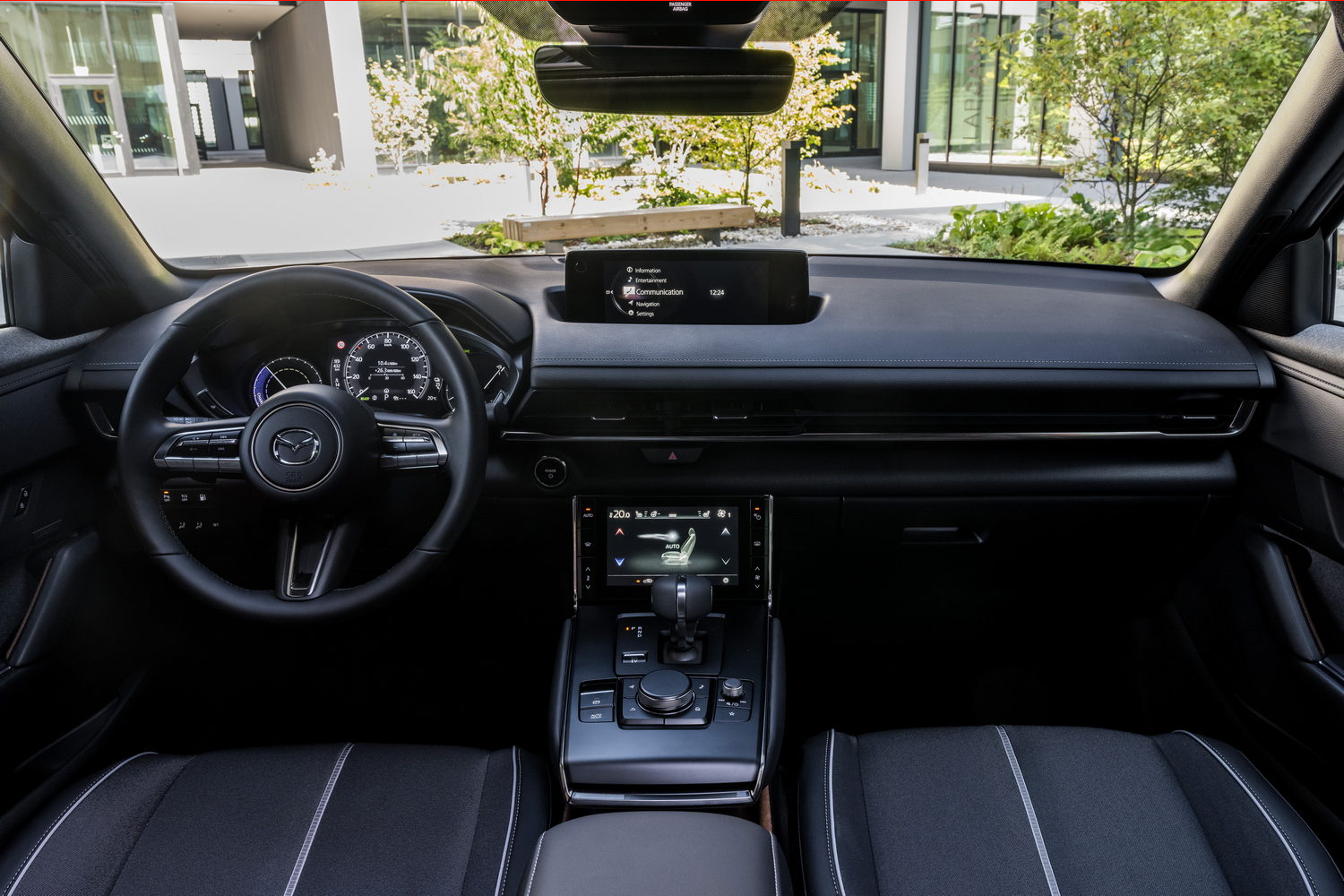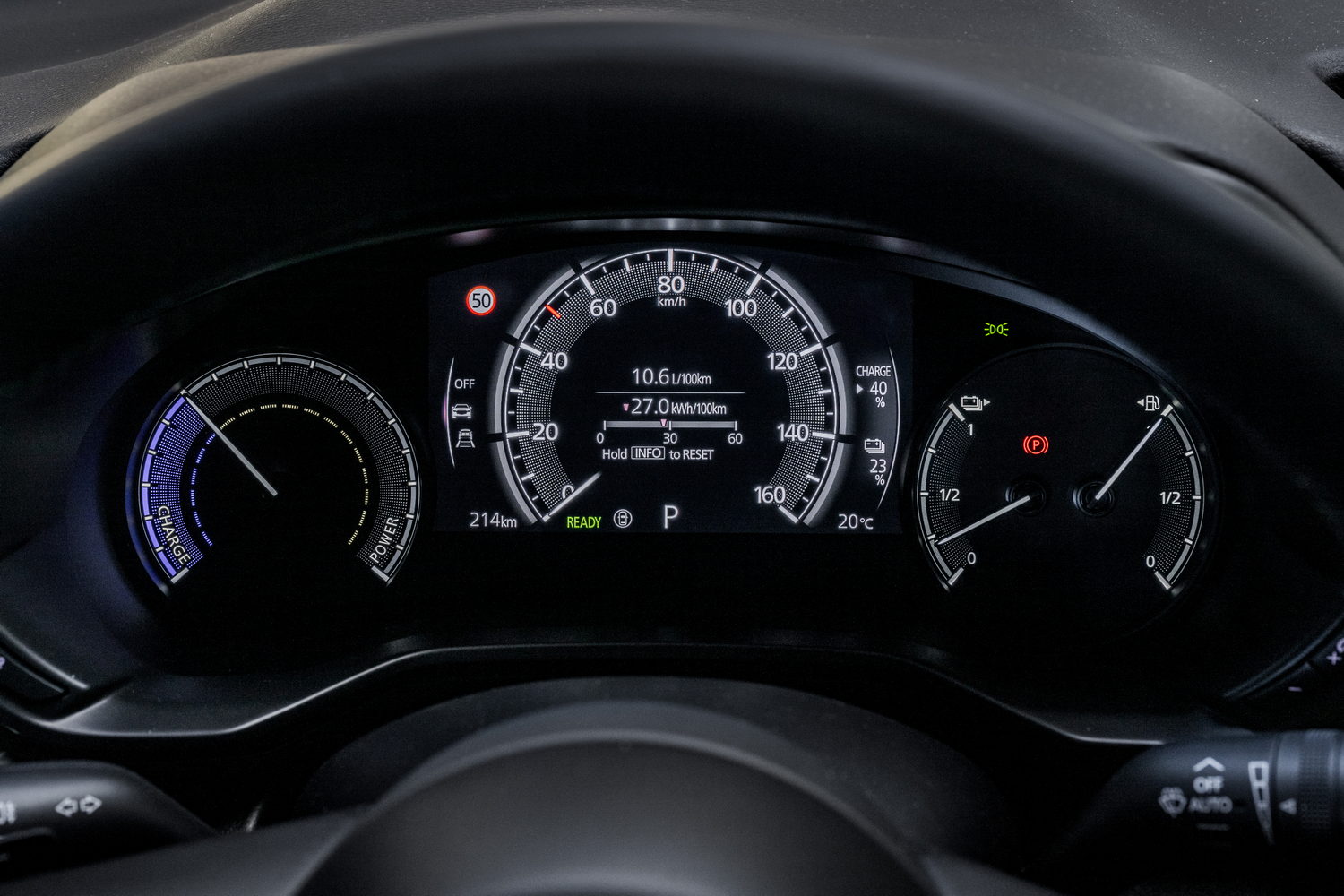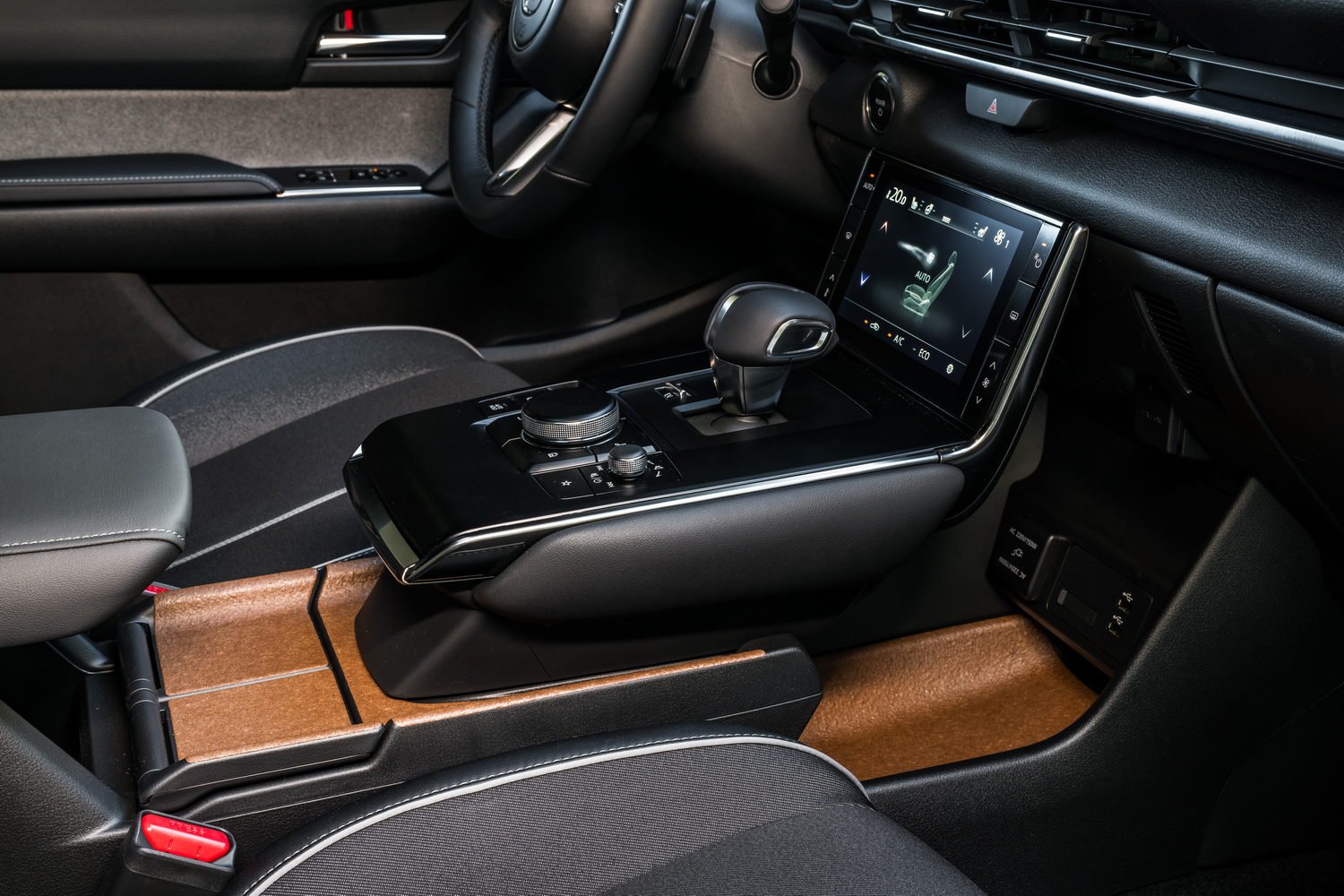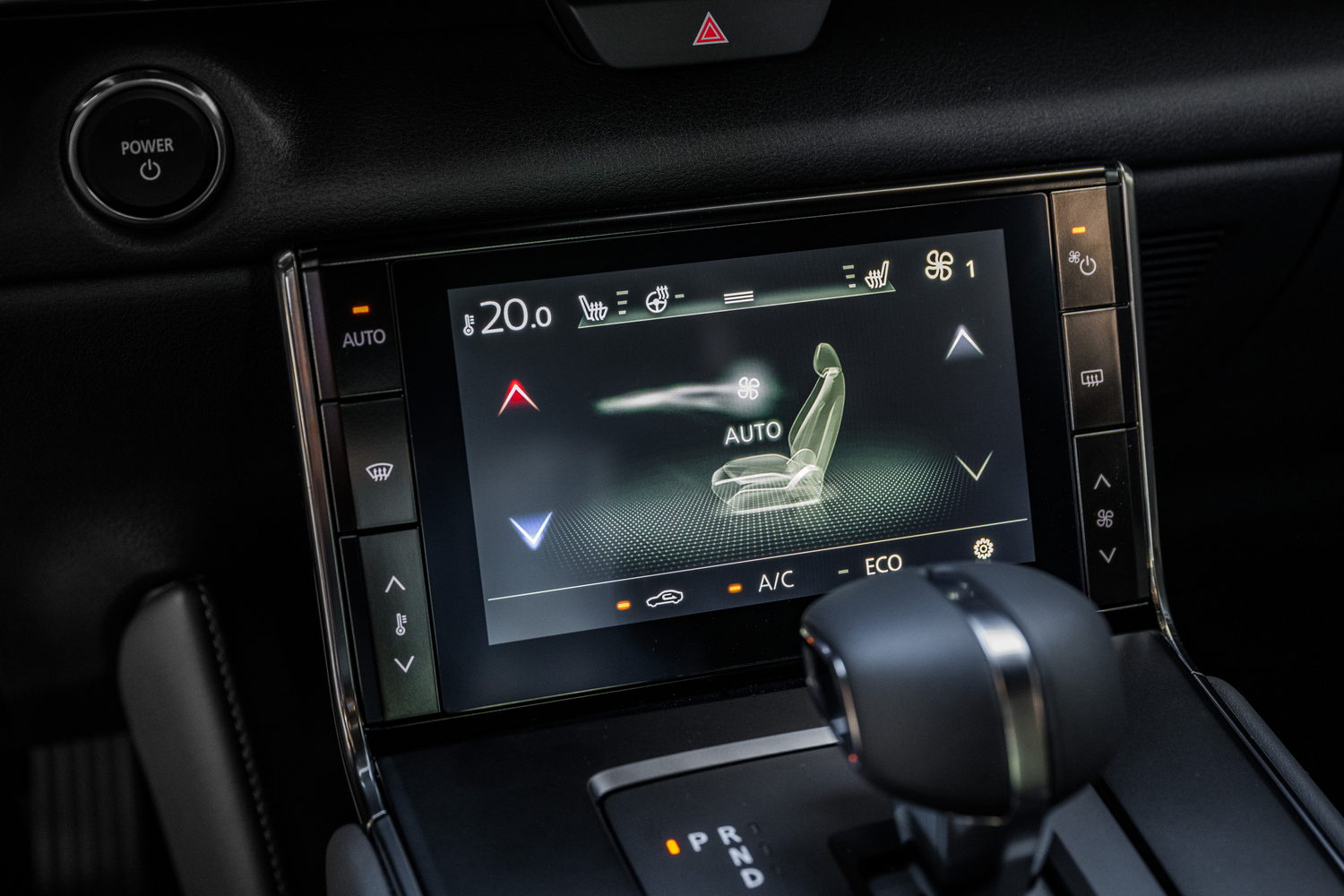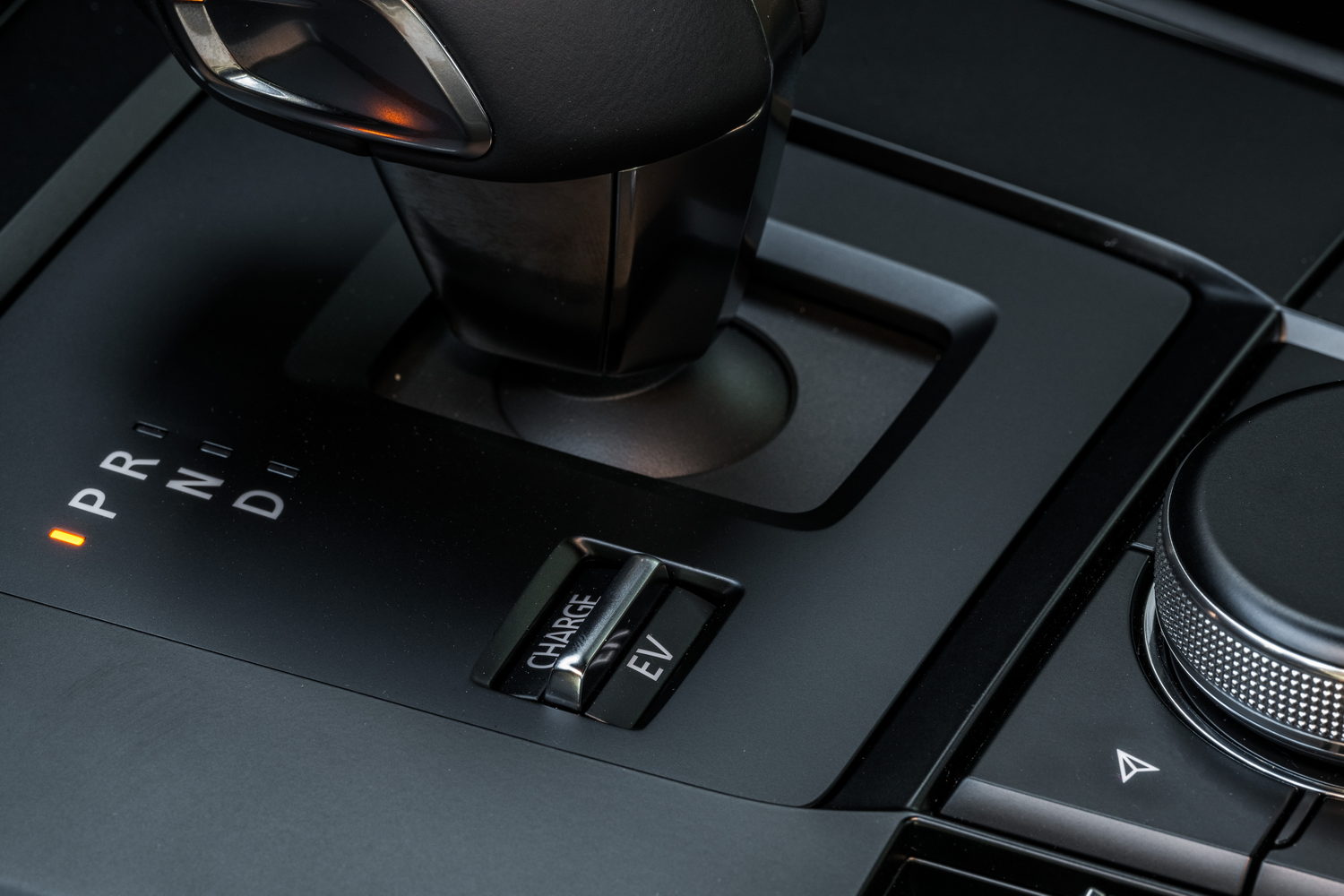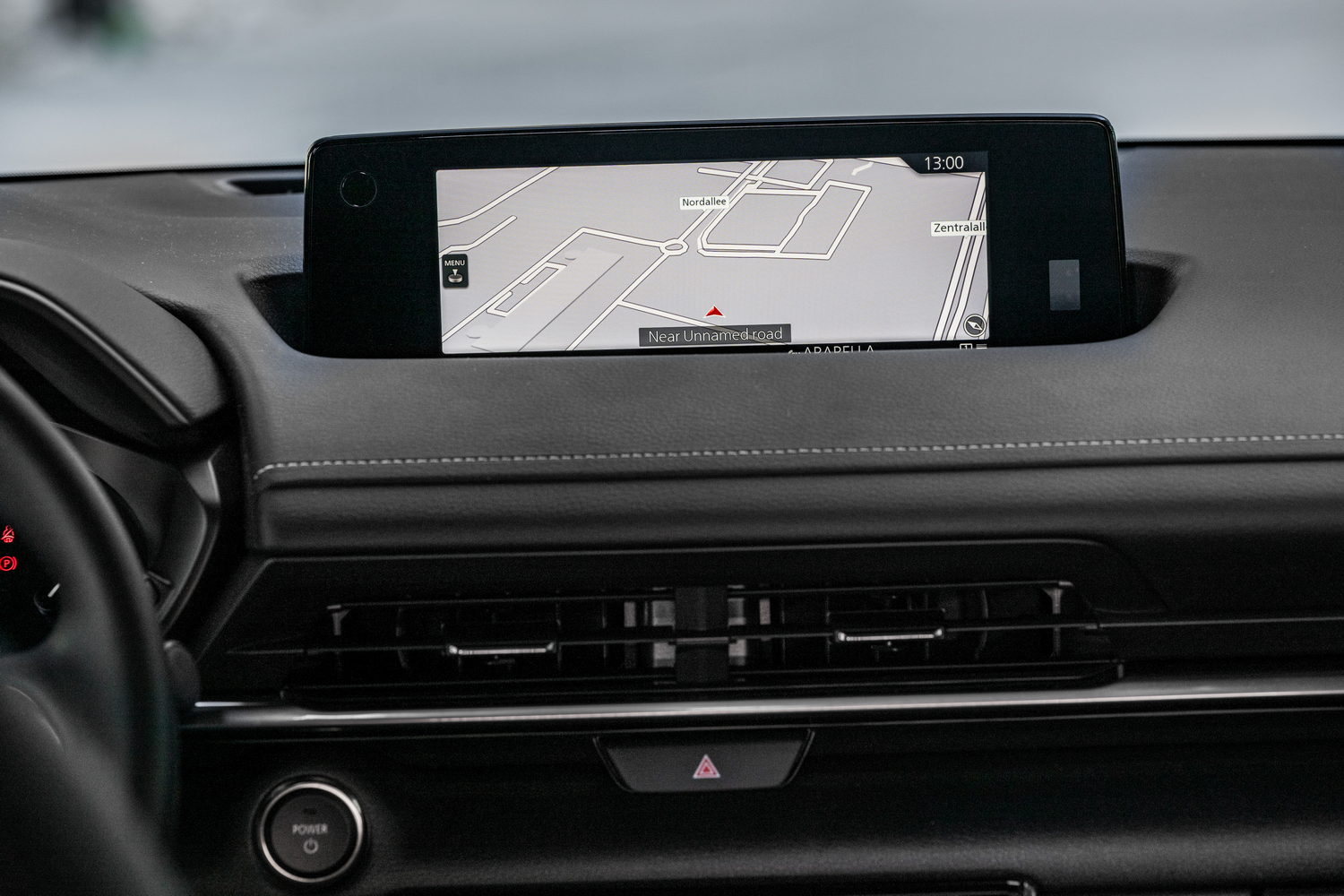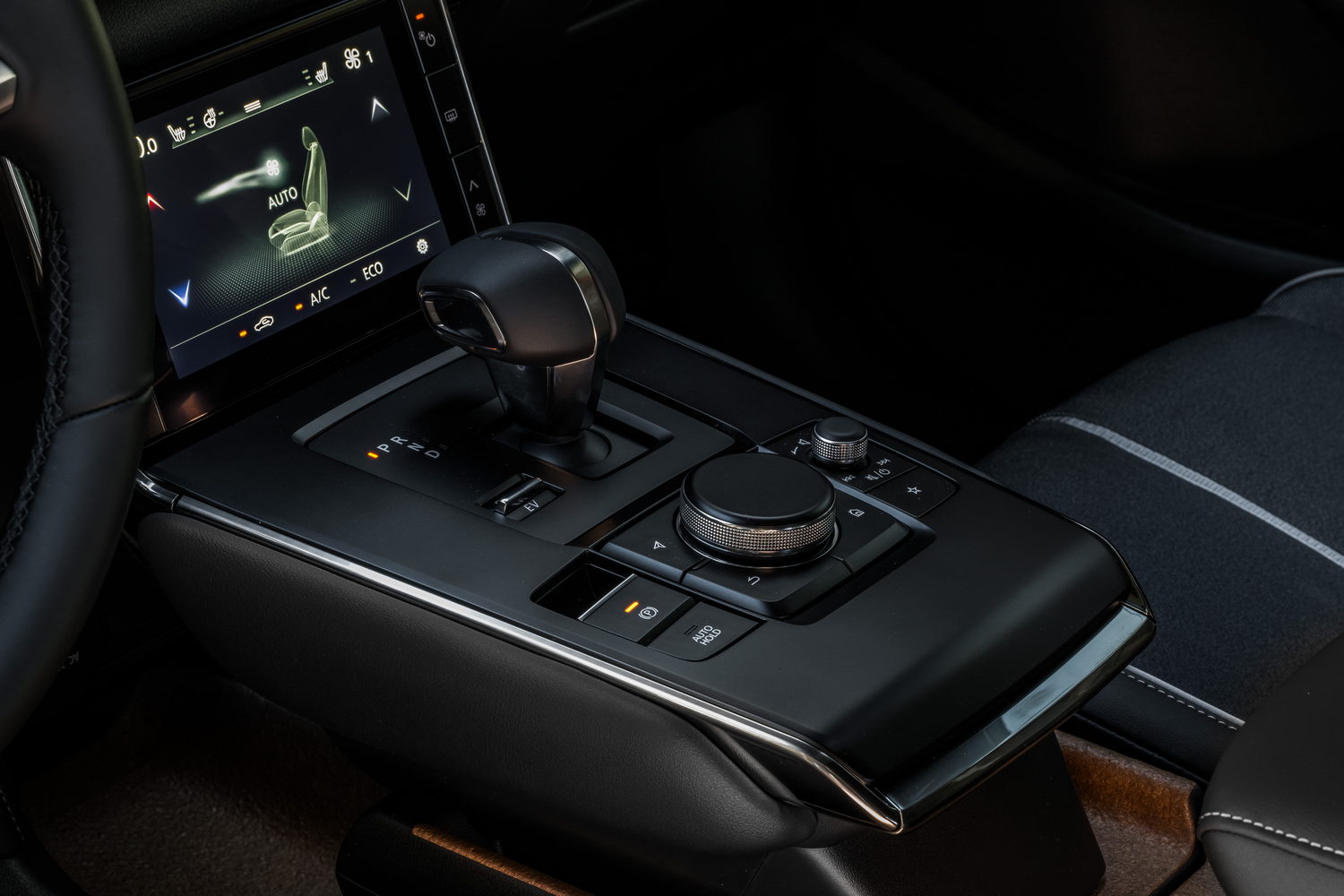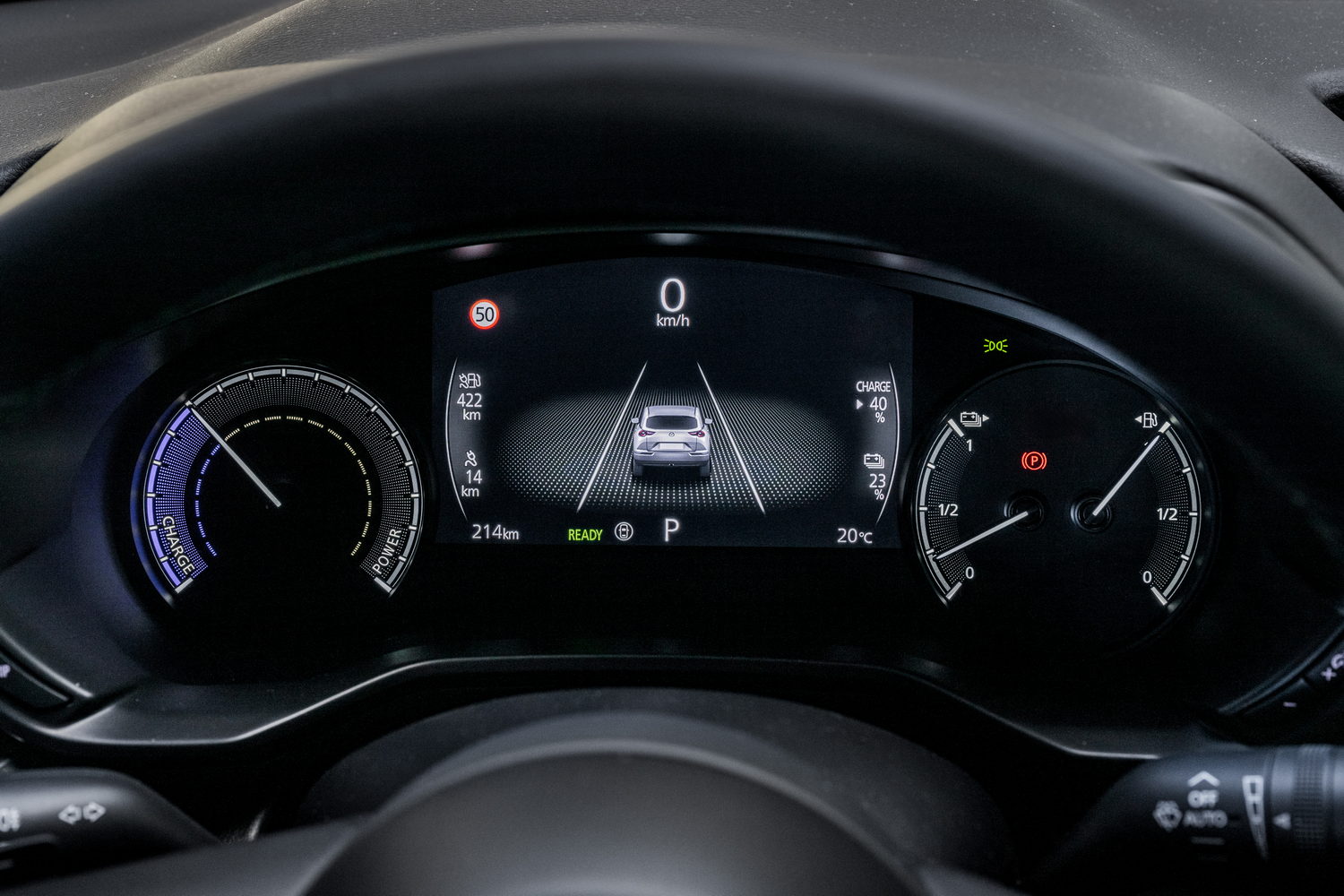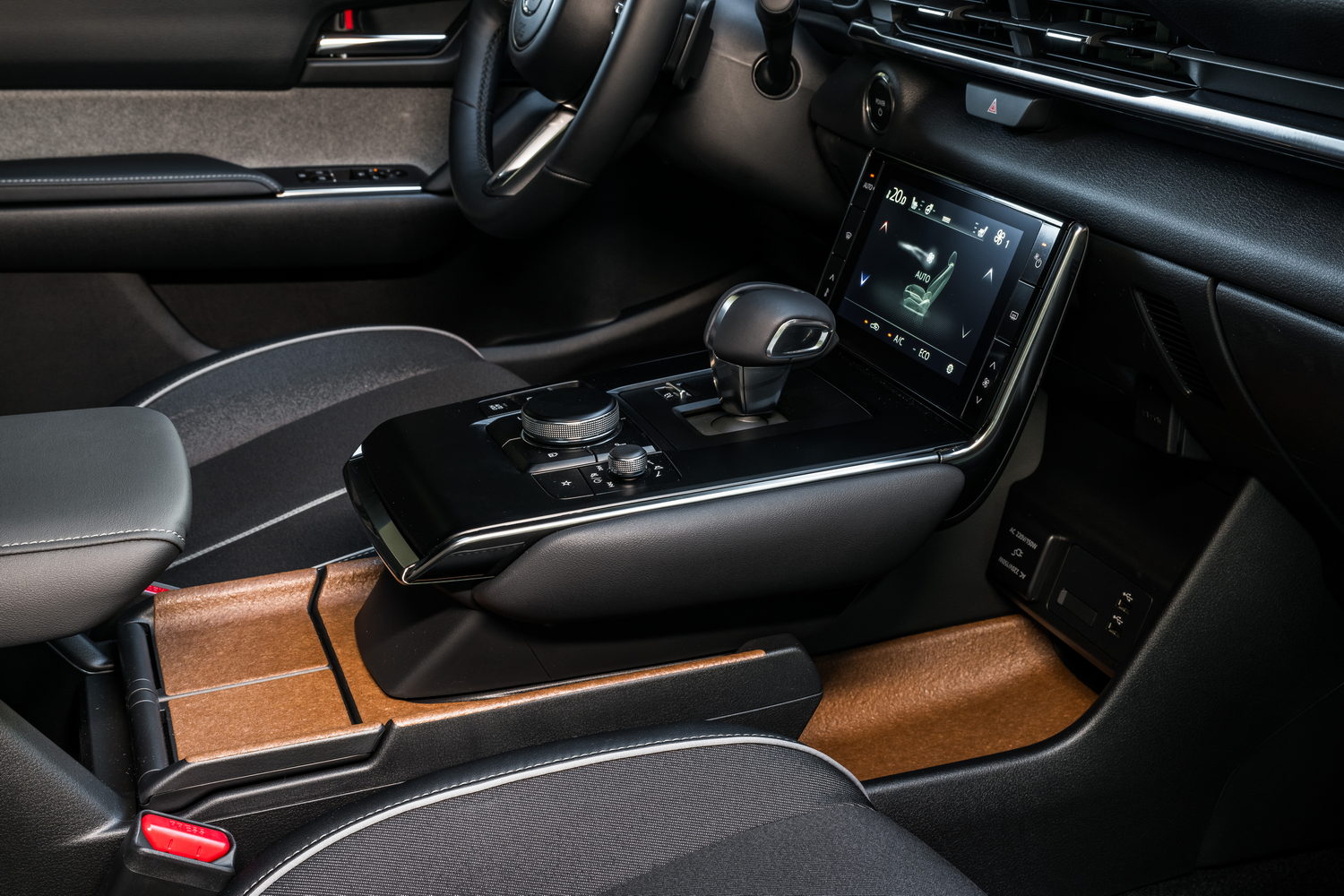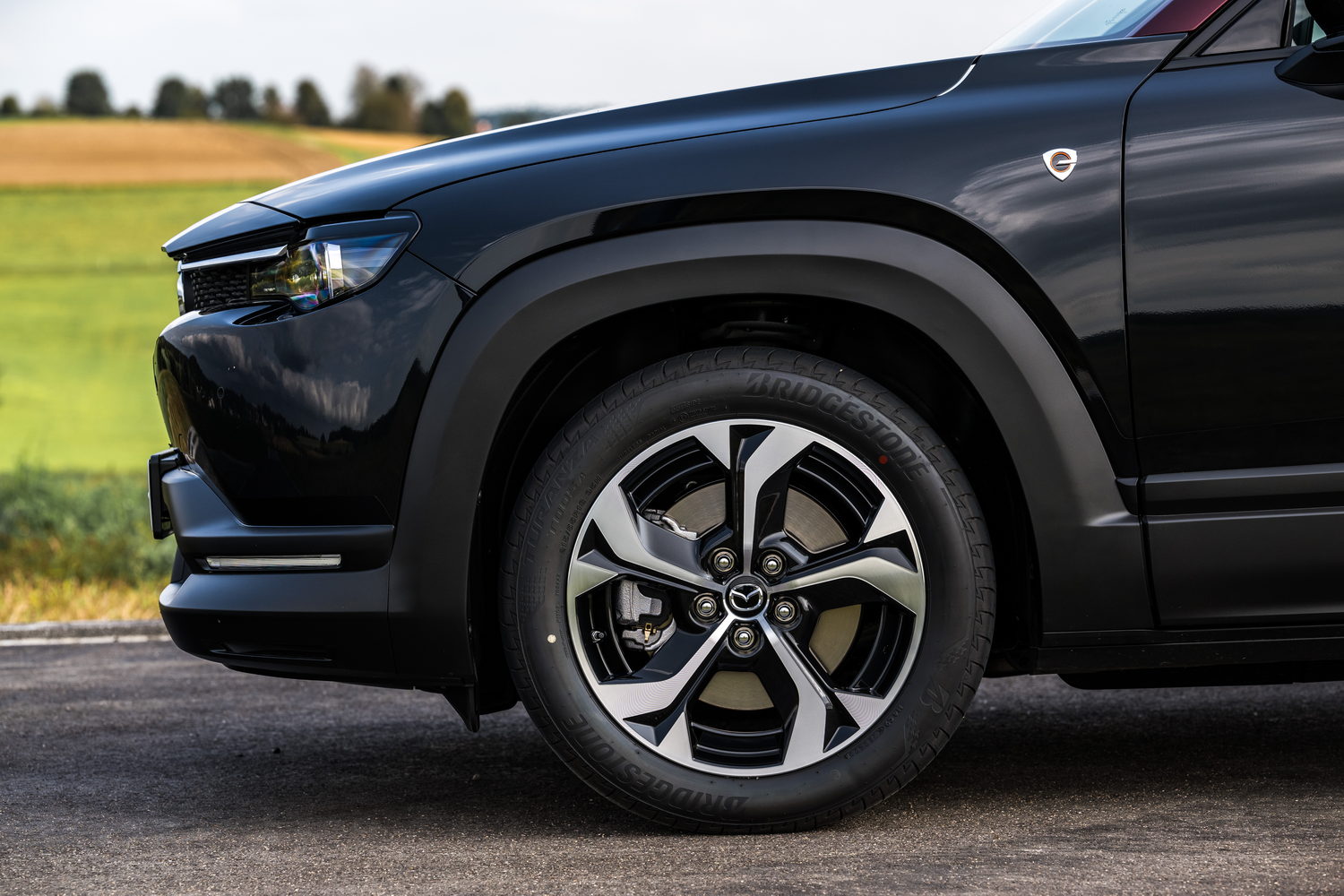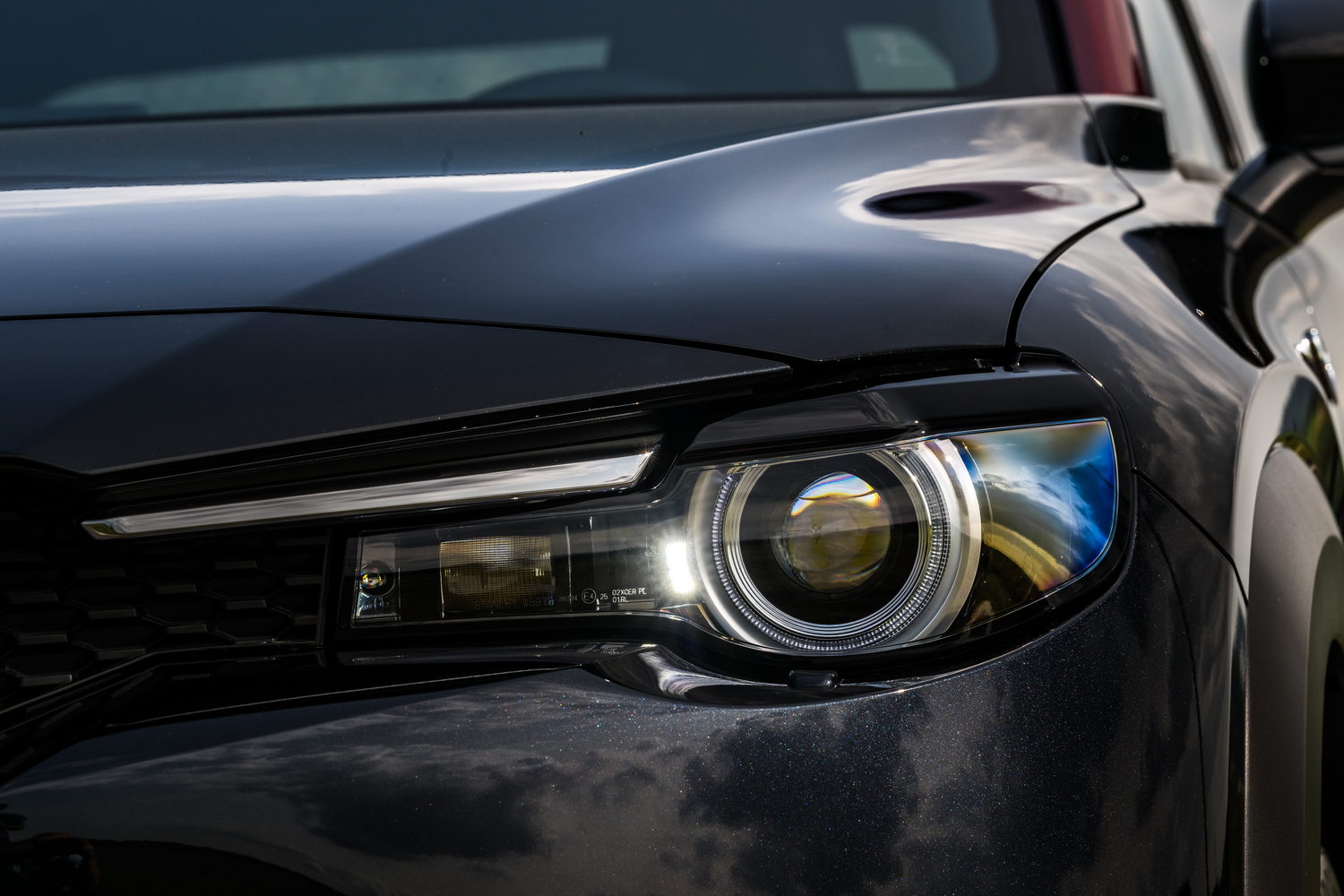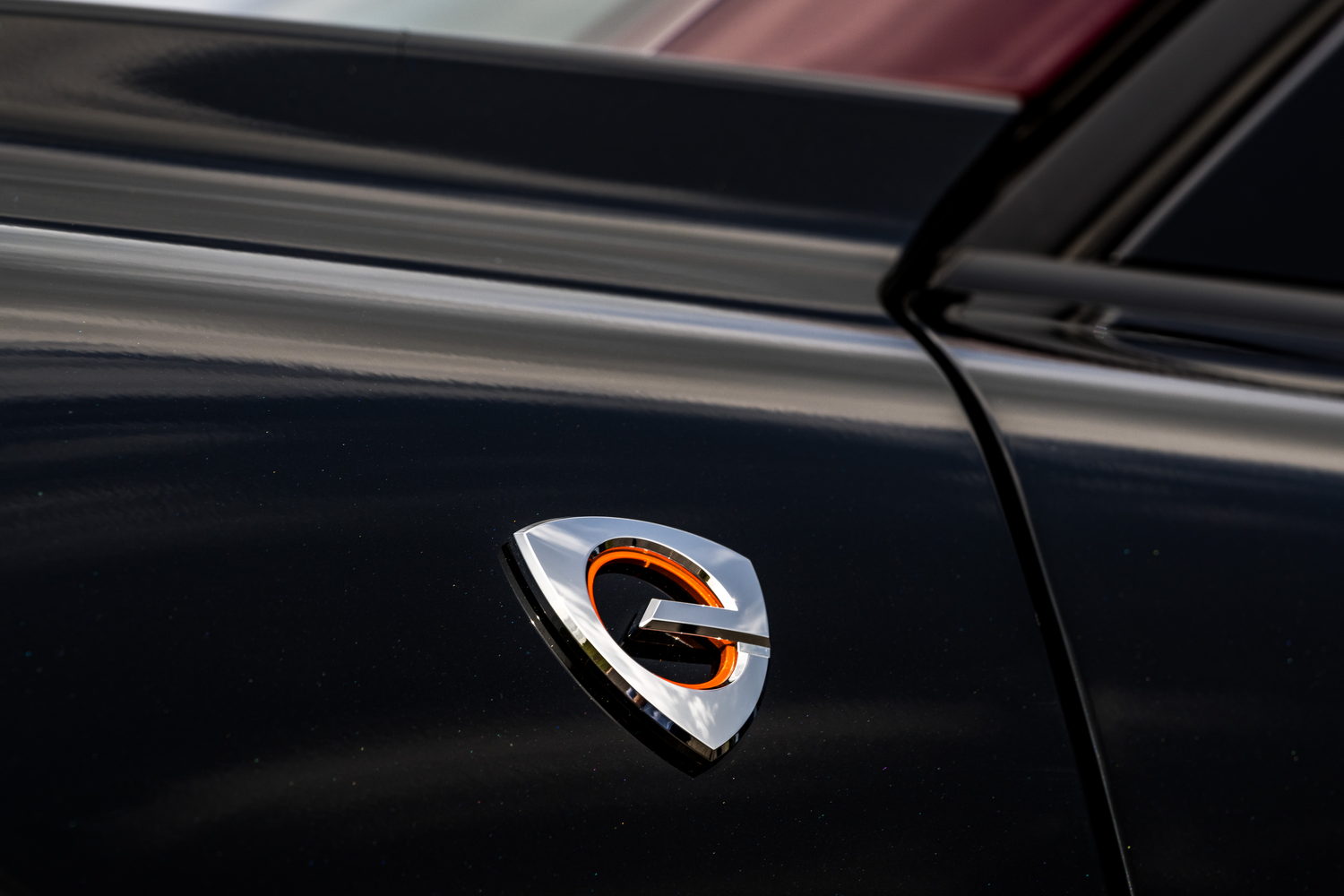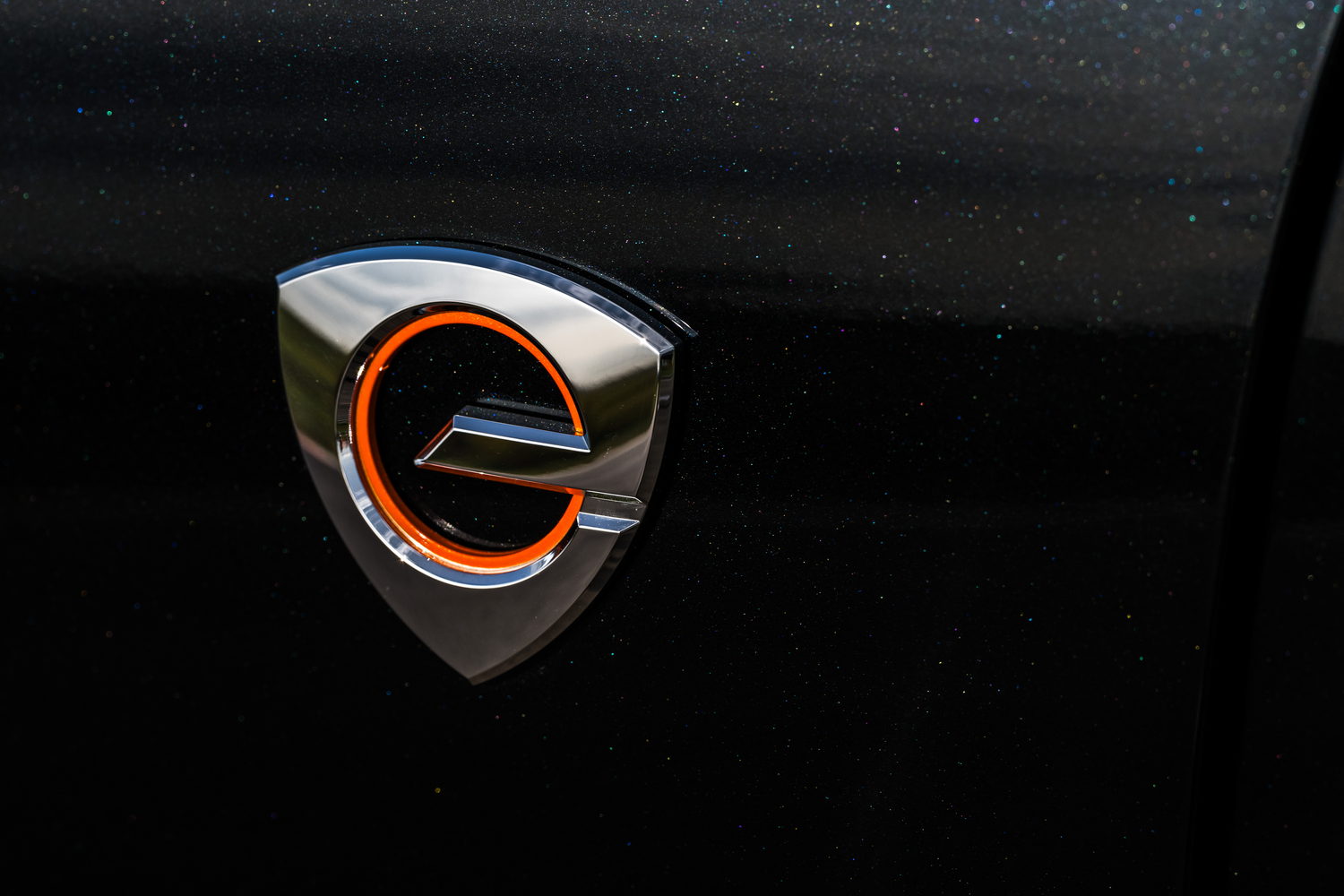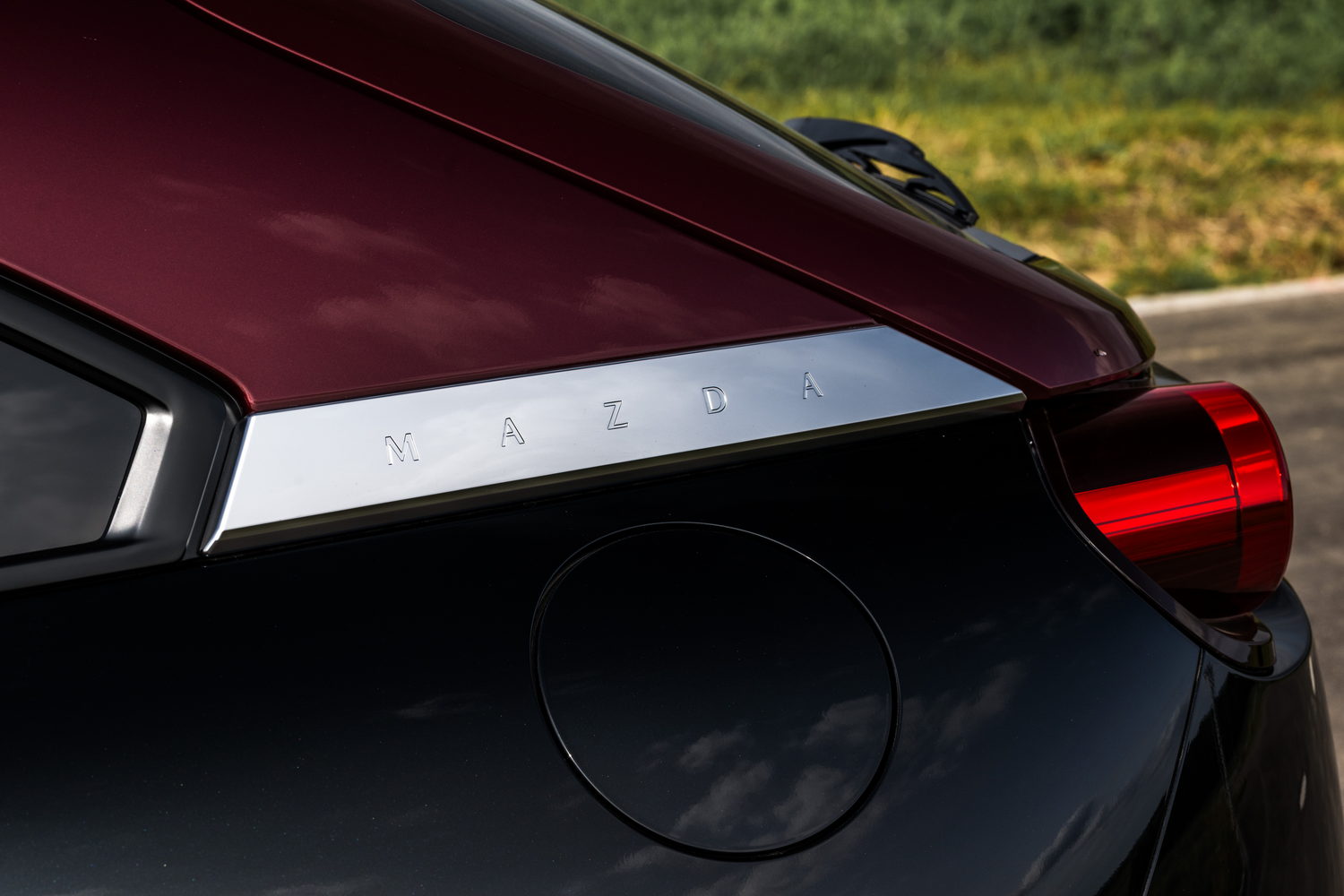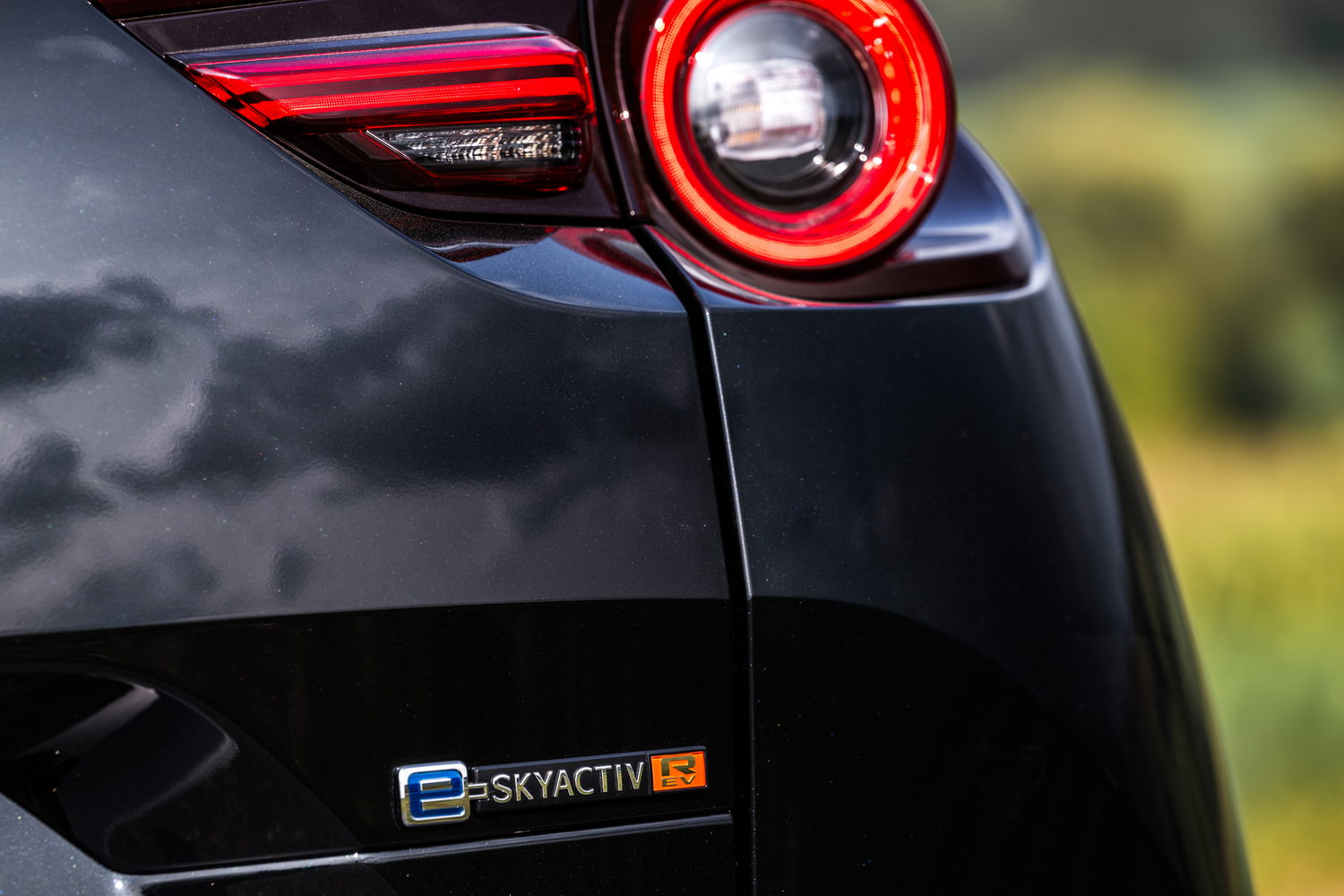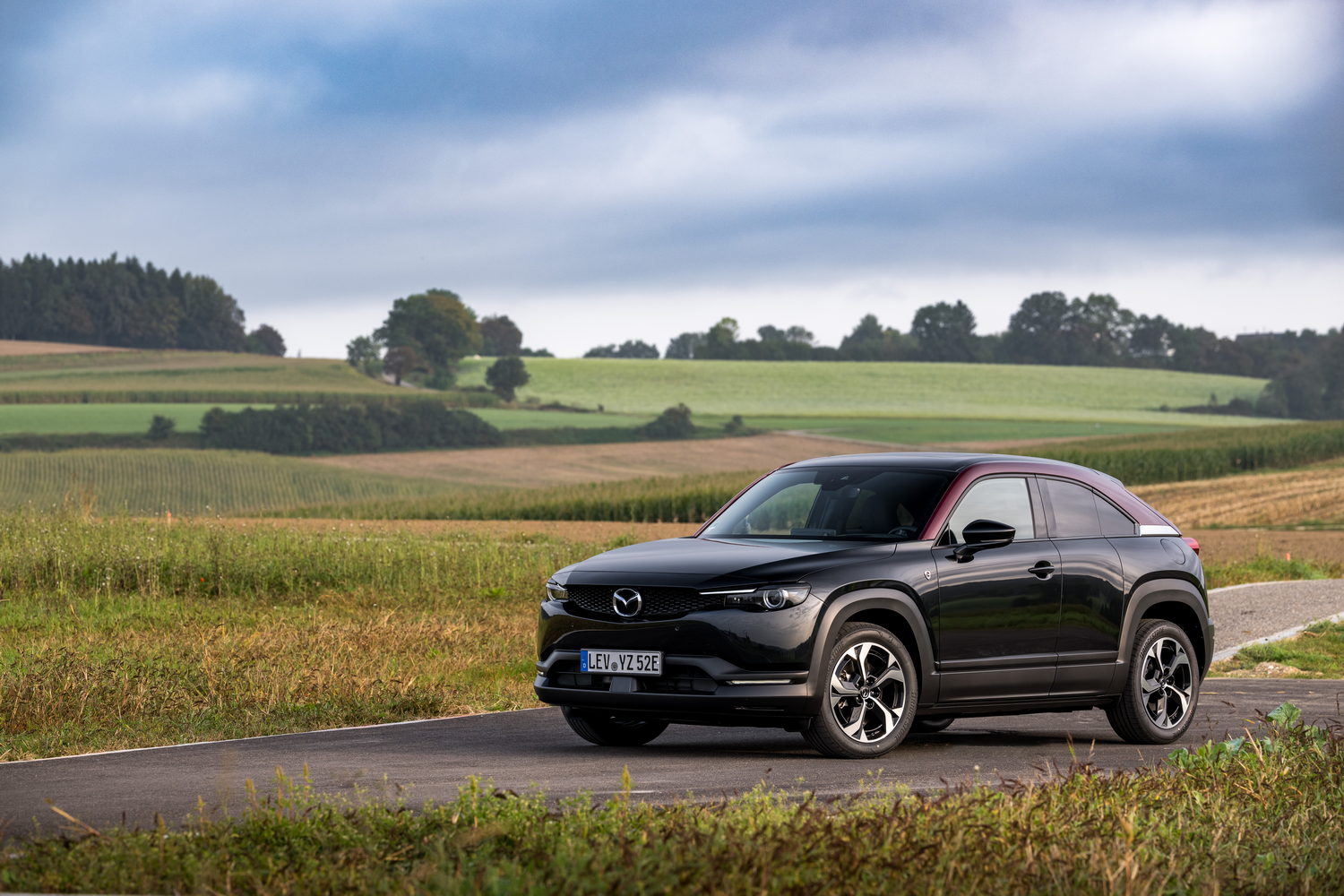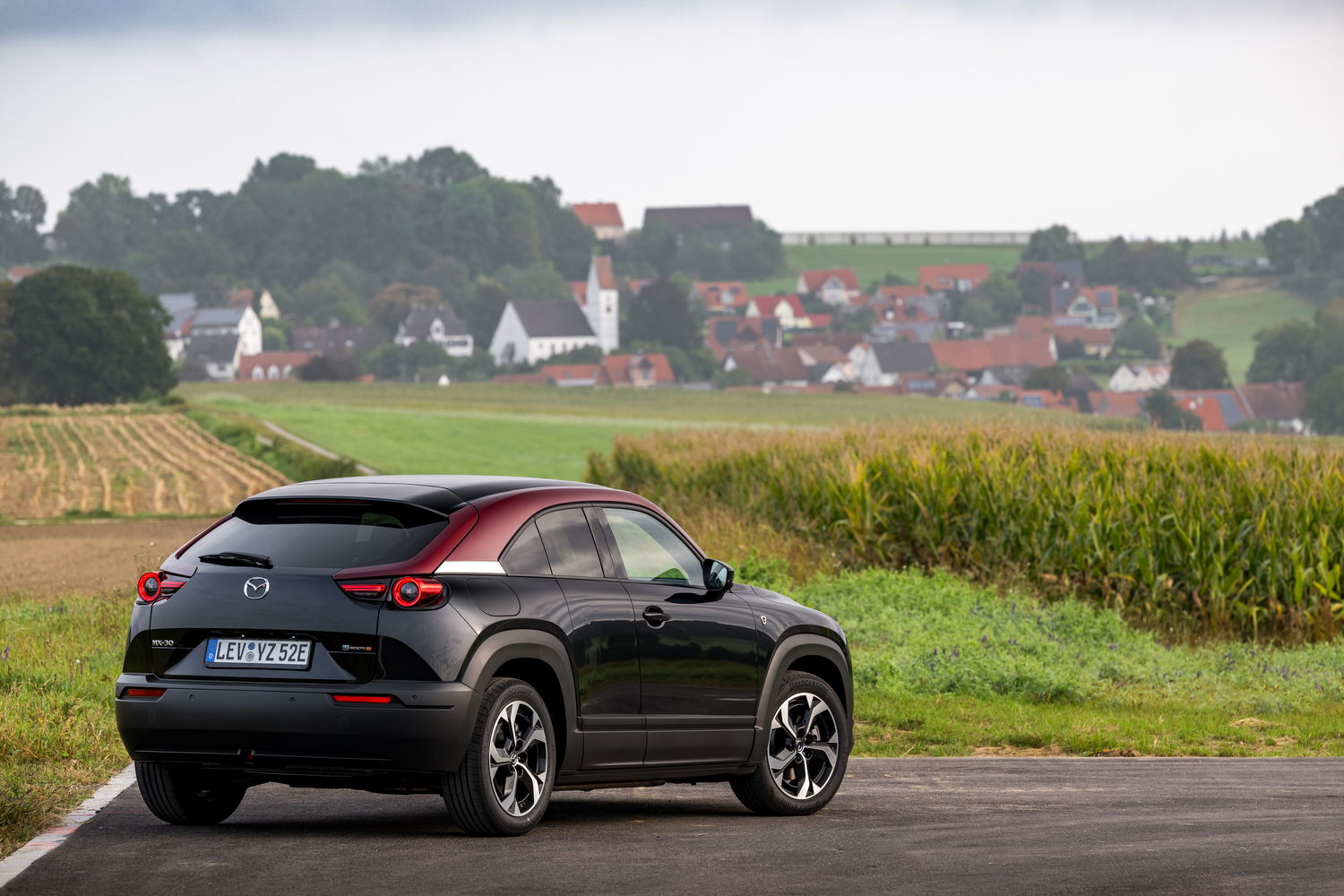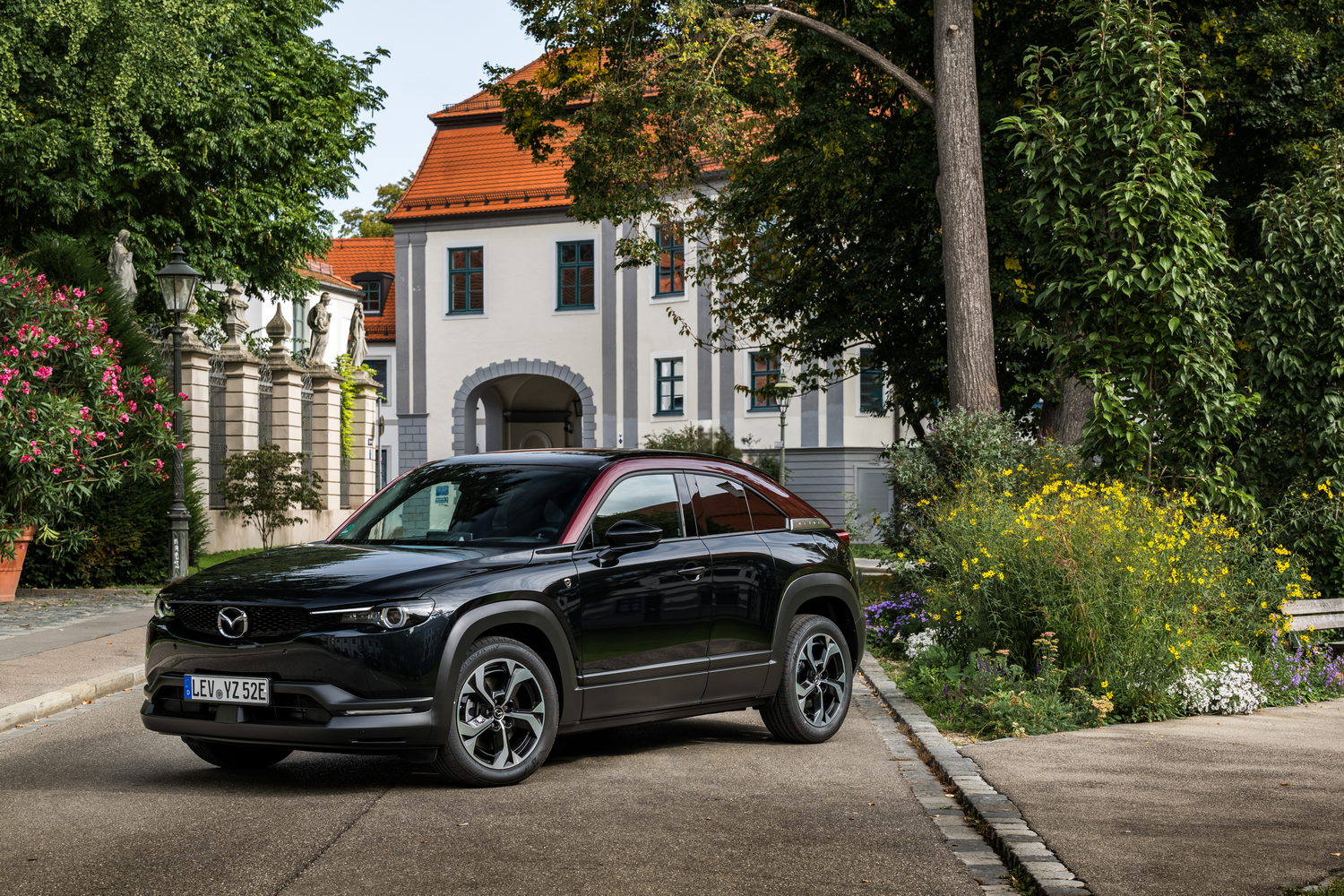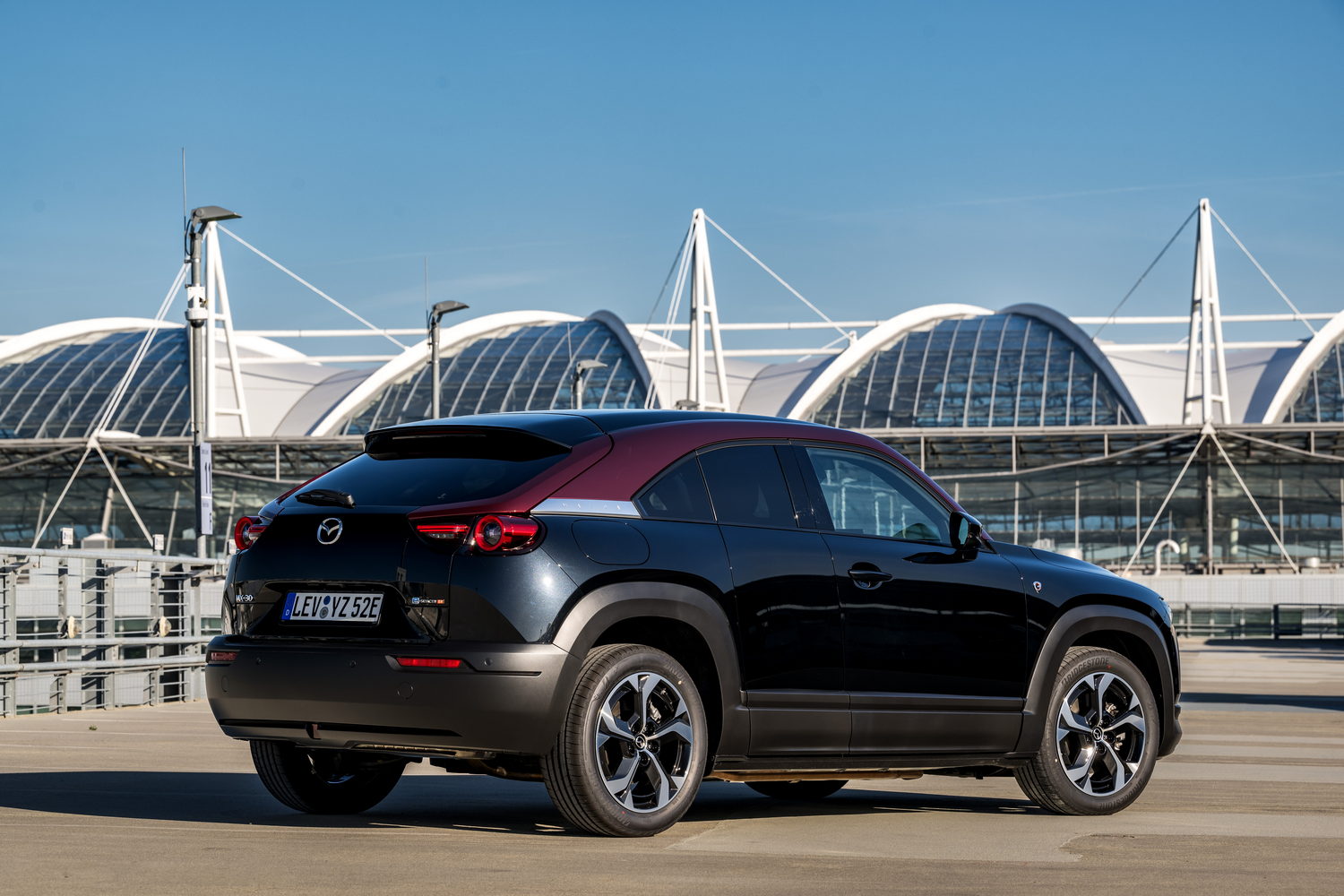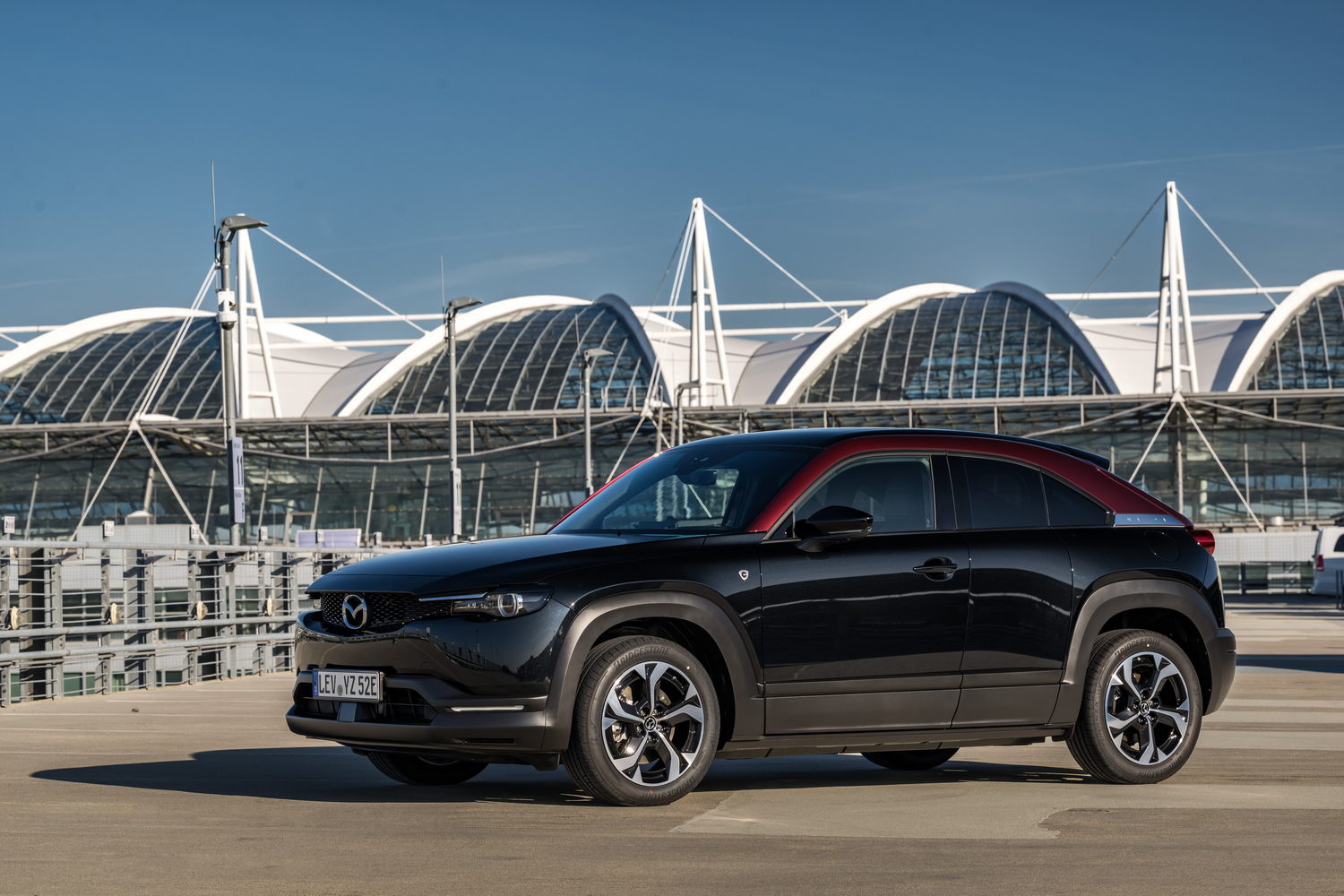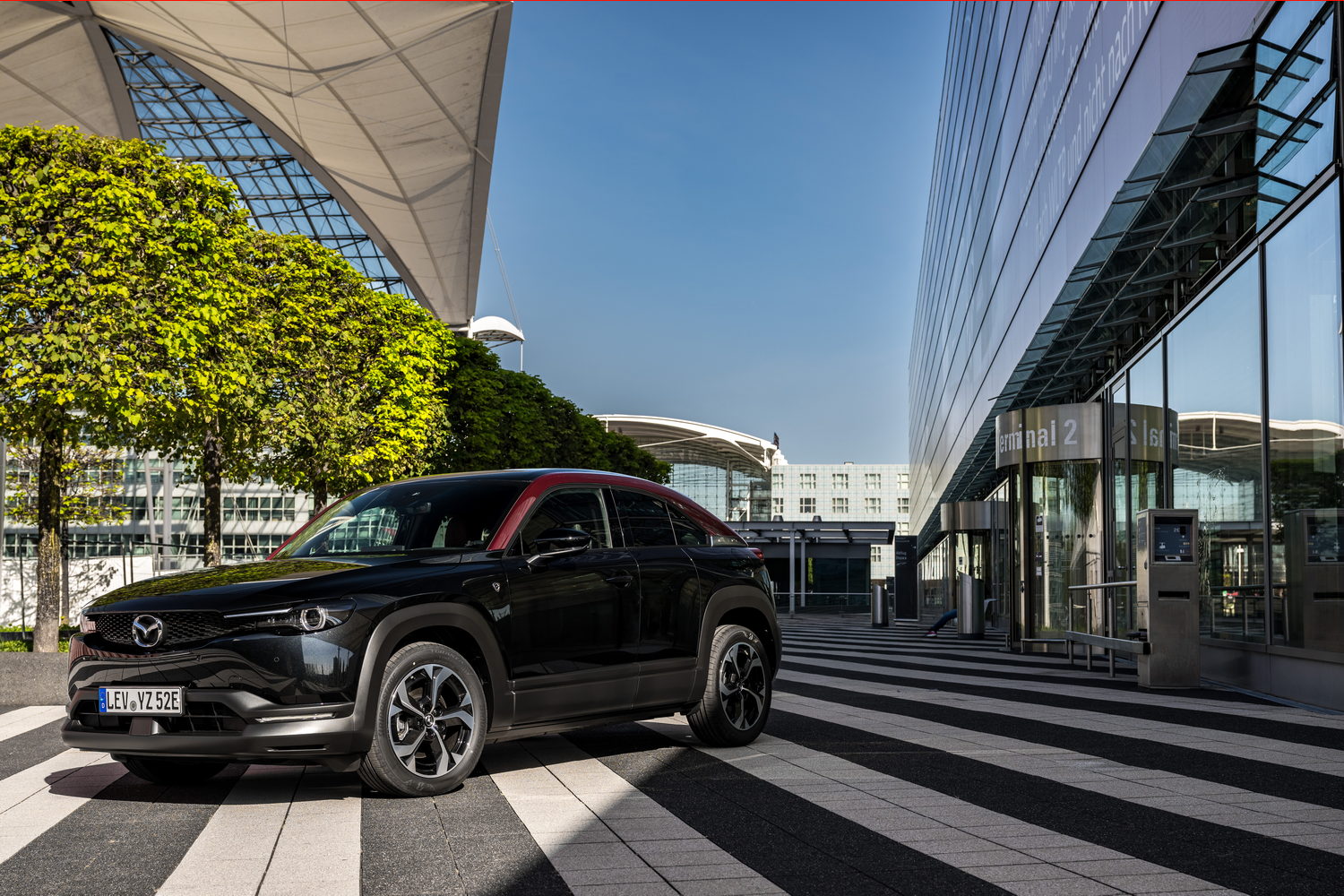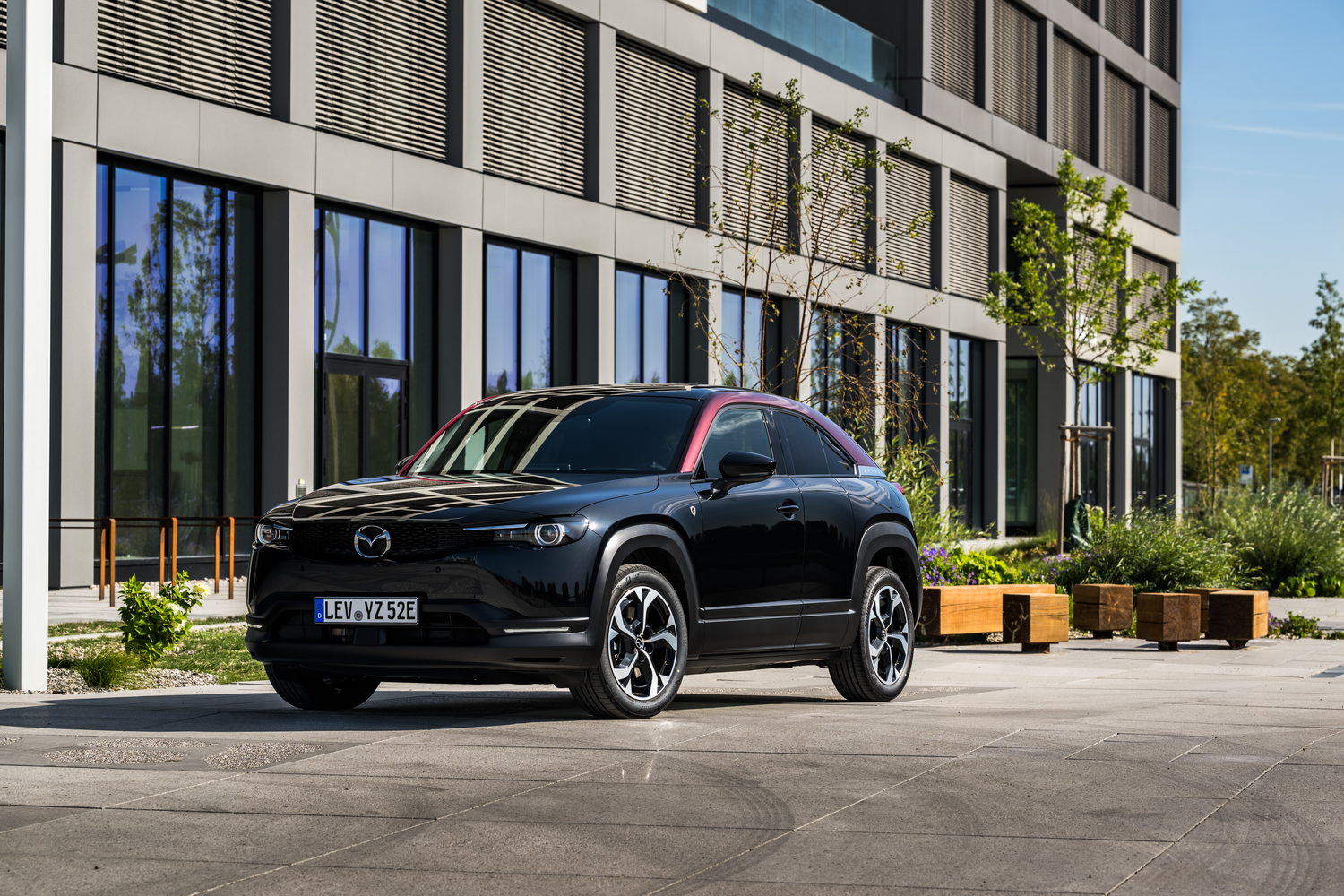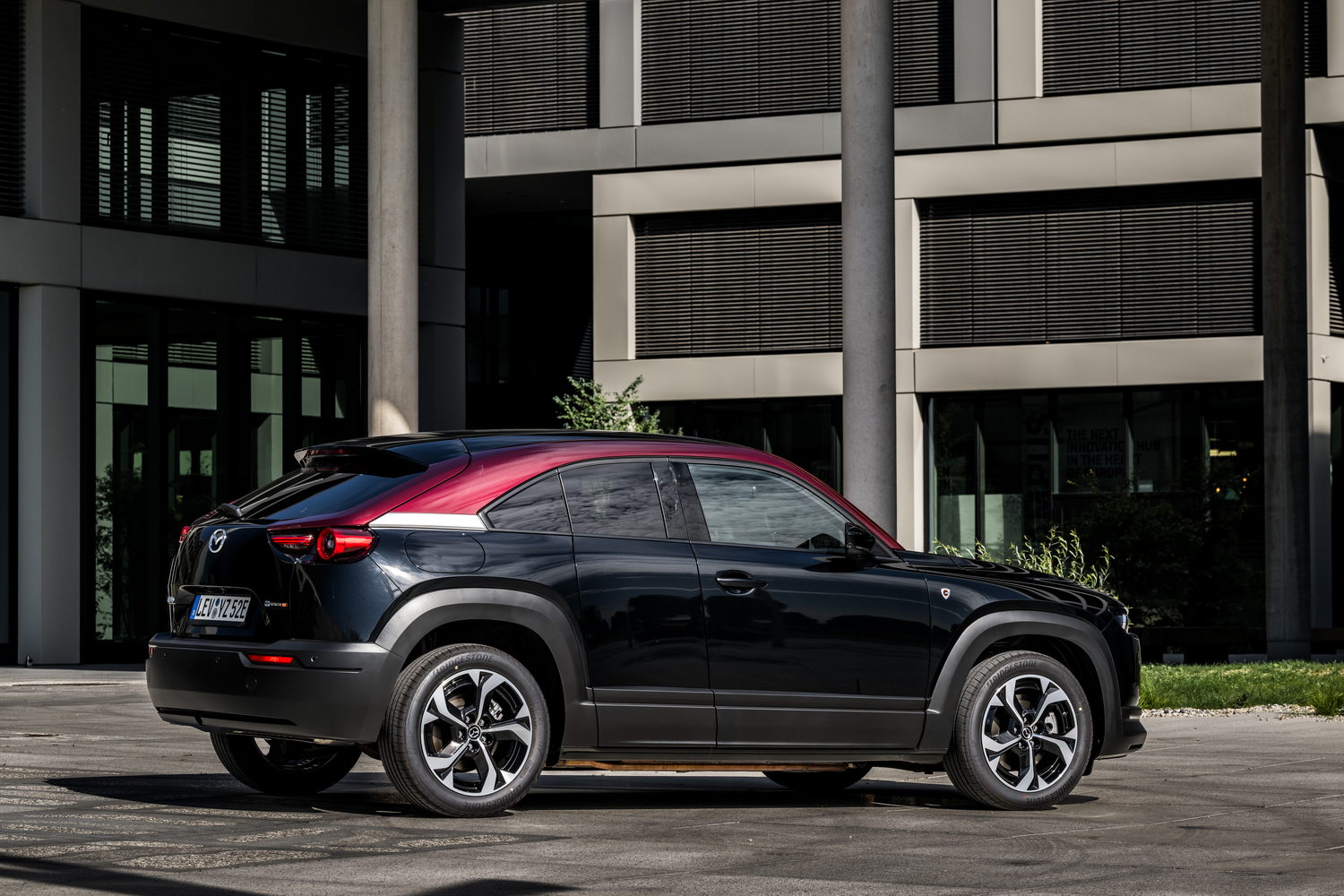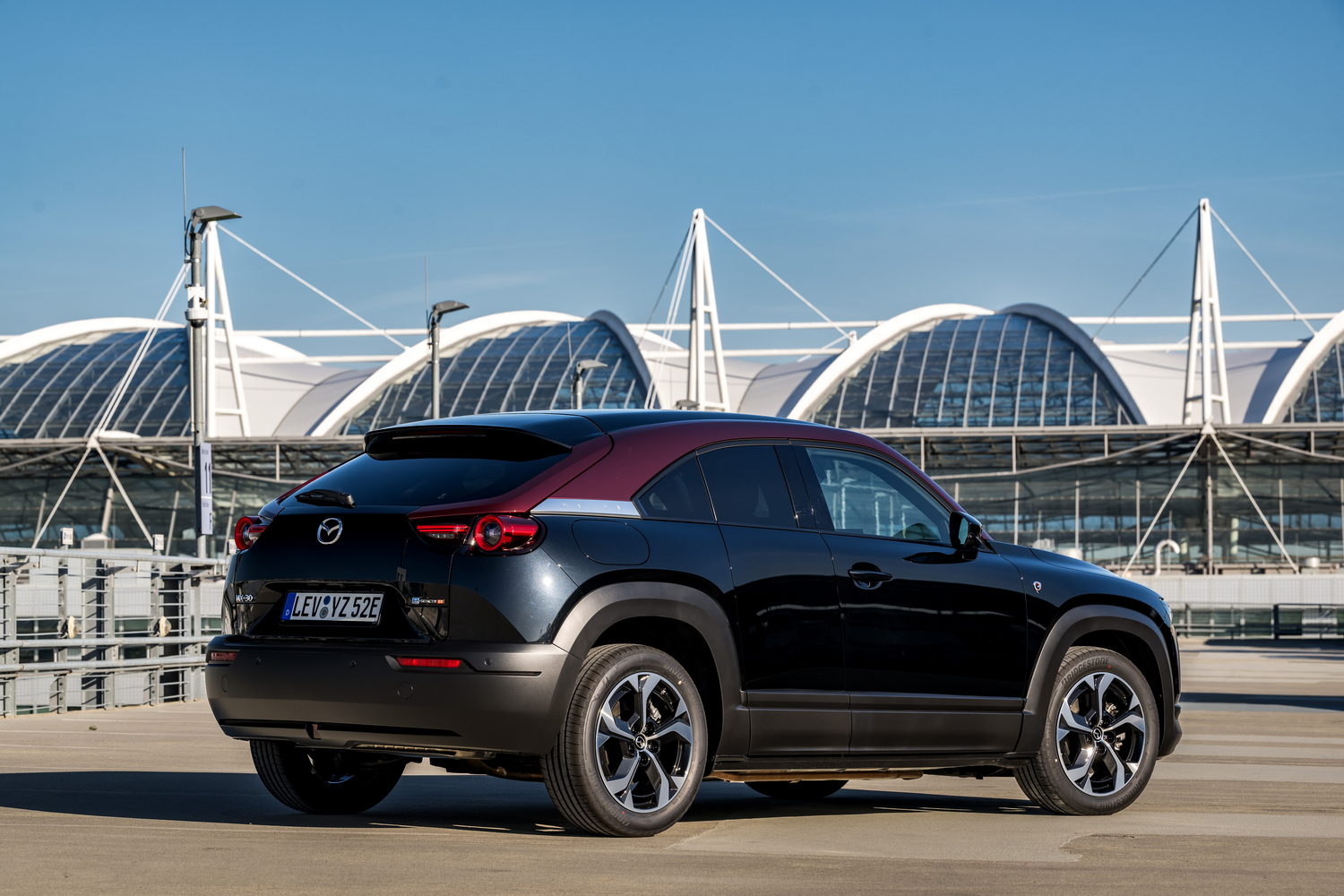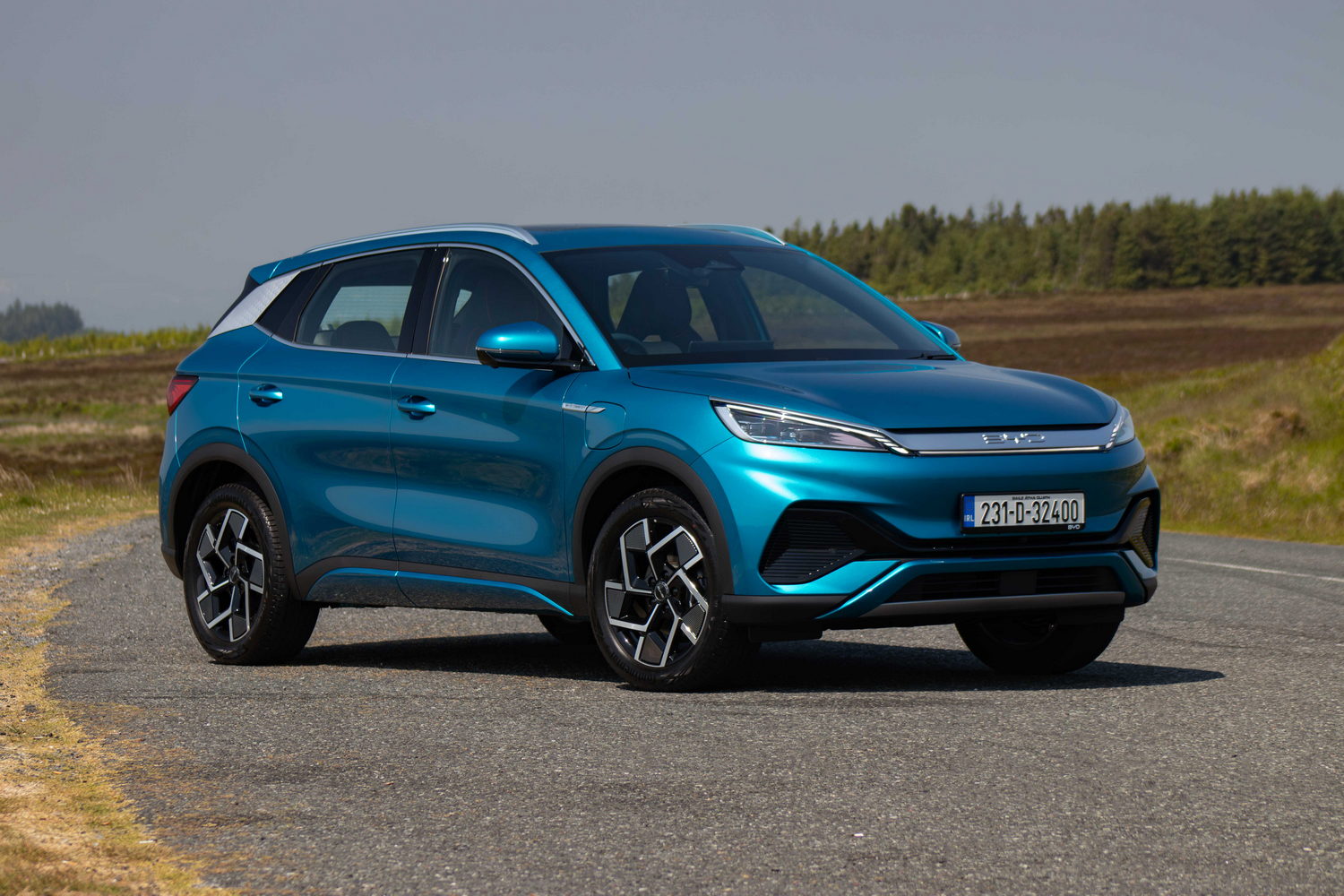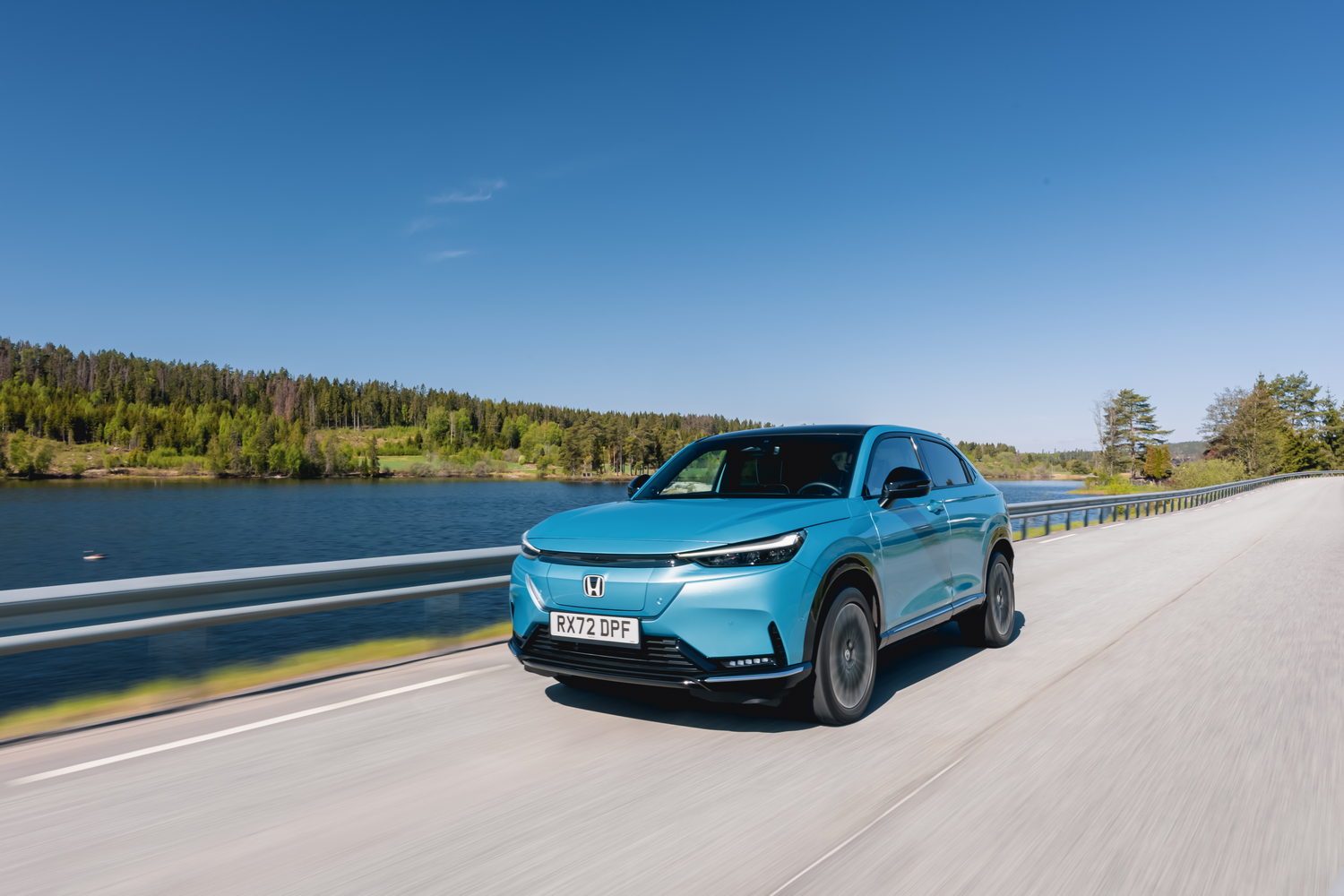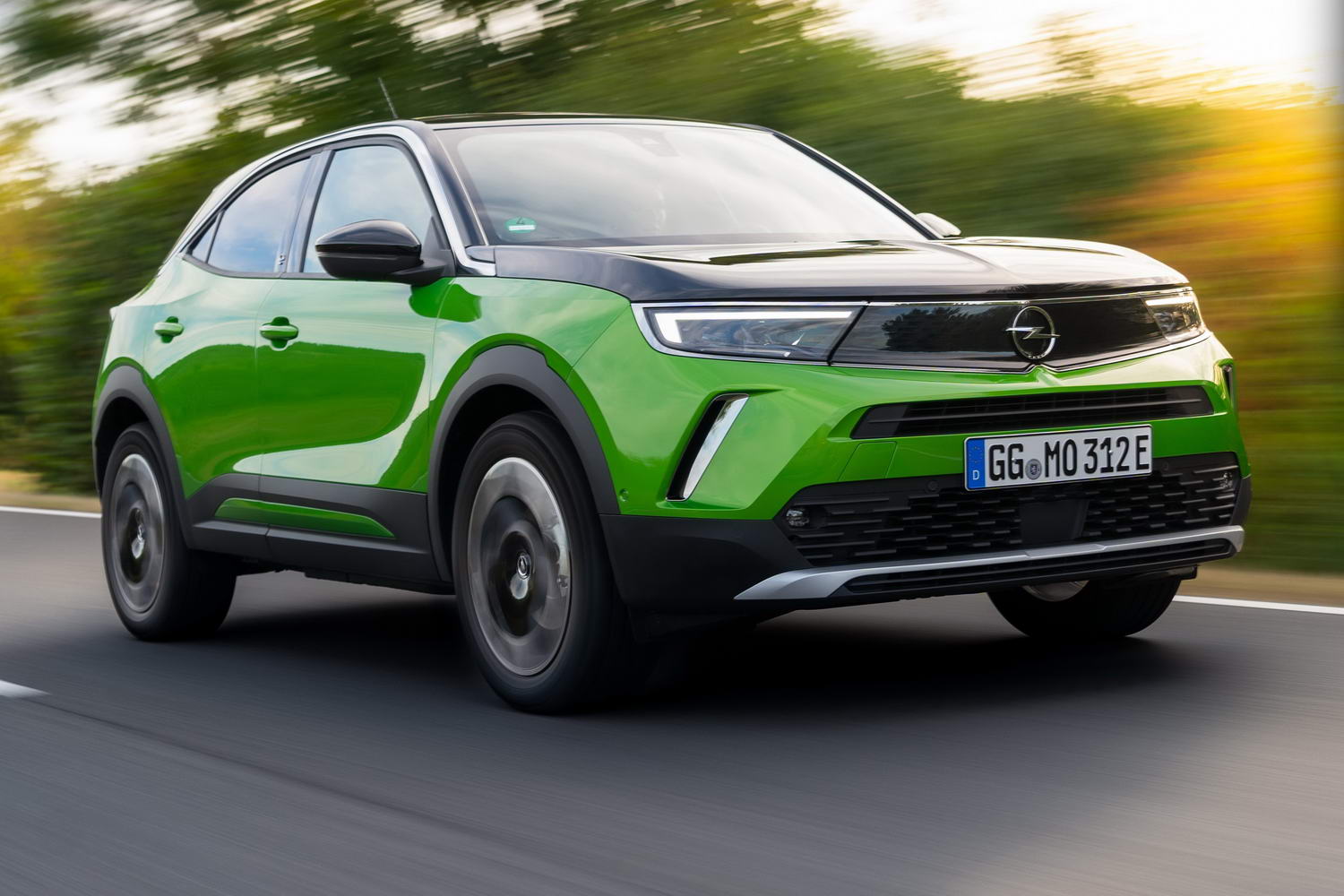The original Mazda MX-30 utilised a smaller battery than many of its peers to keep weight down and provide buyers with a 'right-sized' approach to electric vehicles according to its maker. Now, the Japanese company is adding a plug-in hybrid version of the quirky crossover and reviving the rotary engine - something Mazda is famed for using in the past - to act as a range extender.
In the metal
It was no surprise that Mazda would choose to do something a bit left-field when designing its first dedicated electric vehicle, and the MX-30 successfully manages to look different from the glut of other crossovers on the market without being too polarising. For the MX-30 e-Skyactiv R-EV there are no exterior design changes other than adding a small badge in the shape of a rotor on the front wing and the model name on the back. The wheels have an updated design that further improves the car's aerodynamics and reduces drag.
Mazda also leans into its past to gain inspiration for some of the colour options available. The Edition R version pictured here uses Maroon Rouge Metallic paint for its roof section as a nod to the Mazda R360 Coupe from the 1960s. Other two-tone options are available, while the standard car comes in a single colour for a simpler look. Plenty of coupe-like crossovers are available these days, but the Mazda is unique because of its rear-hinged half-size back doors and lack of a traditional B-pillar. This layout does open up the cabin in the same way that the BMW i3 did, though, like the i3, it isn't a perfect solution.
There may be three seatbelts across the rear, but passenger space is by no means the most generous in the segment, and it's best to consider the MX-30 as a four-seater rather than a five-seater. At 350 litres (332 litres if you option the Bose stereo system), the Mazda's boot capacity is pretty average - also a factor dictated by the car's silhouette.
Sitting in the driver's seat, the layout is refreshingly simple, and despite plenty of digitalisation by way of screens, there are still physical buttons for all of the main functions. The lower touchscreen on the centre console does seem slightly redundant as the climate functions can be accessed either via the display itself or by buttons on either side. In contrast, the wide upper display isn't touch-enabled but operated by the rotary controller aft of the chunky drive selector.
The use of cork on some of the centre console surfaces - a nod to Mazda's past when it was a producer of the material - is another lovely touch and one of the details that sets the MX-30 apart from its rivals. The build quality inside is top notch too.
Driving it
In the transformation from EV to plug-in hybrid, the MX-30's battery has almost halved in capacity, from a 35.5kWh unit in the MX-30 BEV to 17.8kWh in this R-EV version. The fully electric model drew plenty of criticism for its paltry 265-kilometre range and with this smaller capacity battery, the electric range drops to 85 kilometres in WLTP conditions. That will be enough for many to rule it out of contention as an EV, but as a PHEV that range figure beats plenty of rivals, many of which tend to manage only 40-50 kilometres.
The smaller battery creates room for a 50-litre fuel tank, leading us to the rotary engine, a design that few other car makers have ever put into series production. Its tiny capacity, size and weight mean it doesn't produce a huge amount of power - just 75hp at 4,500rpm - but that's less important in this case as, unlike other PHEVs that use much larger combustion engines to continue powering the vehicle once the battery charge depletes, the rotary engine in the Mazda never drives the wheels directly. Instead, it acts as an electricity generator to charge the battery, similar to the Nissan e-Power system in models such as the X-Trail. That setup's nature might leave some people describing this car as a range extender rather than a plug-in hybrid.
Three drive settings are available, with the car defaulting to the Normal mode when you begin driving. In this setting the car will use all of the remaining battery charge before activating the rotary engine. If more power is needed than the battery can supply at that state of charge, the rotary engine starts up to send enough energy.
That means, for the most part, the Mazda still drives in the same way that an electric vehicle would. Its 125kW (170hp) electric motor delivers power smoothly without jolts of torque. In many ways, the Mazda's performance is somewhat reserved by current EV standards, but that means its driving dynamics are more akin to a conventional car's. The engine activates periodically to top up the battery as needed and can give the Mazda a total driving range (with a fully charged battery and full tank of fuel) of up to 680 kilometres.
A reasonable level of steering feedback ensures you feel connected with the car, and as you turn into a bend, there is some body lean (though not a lot) from the comfortable suspension. It's clear that Mazda's chassis engineers have wanted to create a car that feels very normal to drive, and its kerb weight of 1,778kg is less than many larger electric crossovers and SUVs currently available. The only thing that is slightly odd about the Mazda is its rotary engine, as when it activates it runs at a constant speed that typically has no relationship to the car's speed or accelerator inputs.
It is a more pronounced sound at lower speeds and not a particularly thrilling one. If you remember the glorious rotary-engined Mazdas of the past, including that 787B Le Mans car with its shrill, high-pitched engine note, and you were hoping for some of that in the MX-30, you'll be disappointed. The rotary engine is more like an old fridge or industrial air conditioning unit running. It is less likely for the rotary engine to be running at lower speeds unless you have it in the charge setting, forcing it to top up the battery. As the car's speed increases, the engine starts to be drowned out by the road noise and the stereo in any case.
The level of brake energy recuperation is adjustable via the paddles behind the steering wheel, and the brake pedal feel isn't bad. Still, as is so often the case with plug-in hybrids, the modulation could be improved, especially in the initial part of pedal travel. It is a minor gripe in what is otherwise a good package.
What you get for your money
With a starting price of €43,021, there is very little difference between the Mazda MX-30 e-Skyactiv R-EV and the fully electric MX-30 (€42,932), so it's more a case of choosing the powertrain you prefer. Paint options above the standard Arctic White will run from €700 for single colours to €1,800 for the contrasting roof, with the latter only available on three of the four specification grades.
All cars come with a reversing camera, front and rear parking sensors, 18-inch alloy wheels, keyless entry and LED headlights. The €48,538 Makoto trim level adds radar cruise control and a Bose 12-speaker stereo. Topping the line-up is the Edition R (€50,638), and this gets numerous bespoke features inside, such as embossed headrests and heated seats.
Summary
We shouldn't be all that surprised to discover that the Mazda MX-30 e-Skyactiv R-EV is one of the quirkier PHEVs on the market right now, but that shouldn't deter buyers. Despite its unconventional engine and powertrain, it can cover longer distances while using its battery - more than many other plug-in hybrids, it's worth noting. As ever with such cars, you will need to plug it in to charge at every opportunity, but do that and you'll reap more of the rewards.

